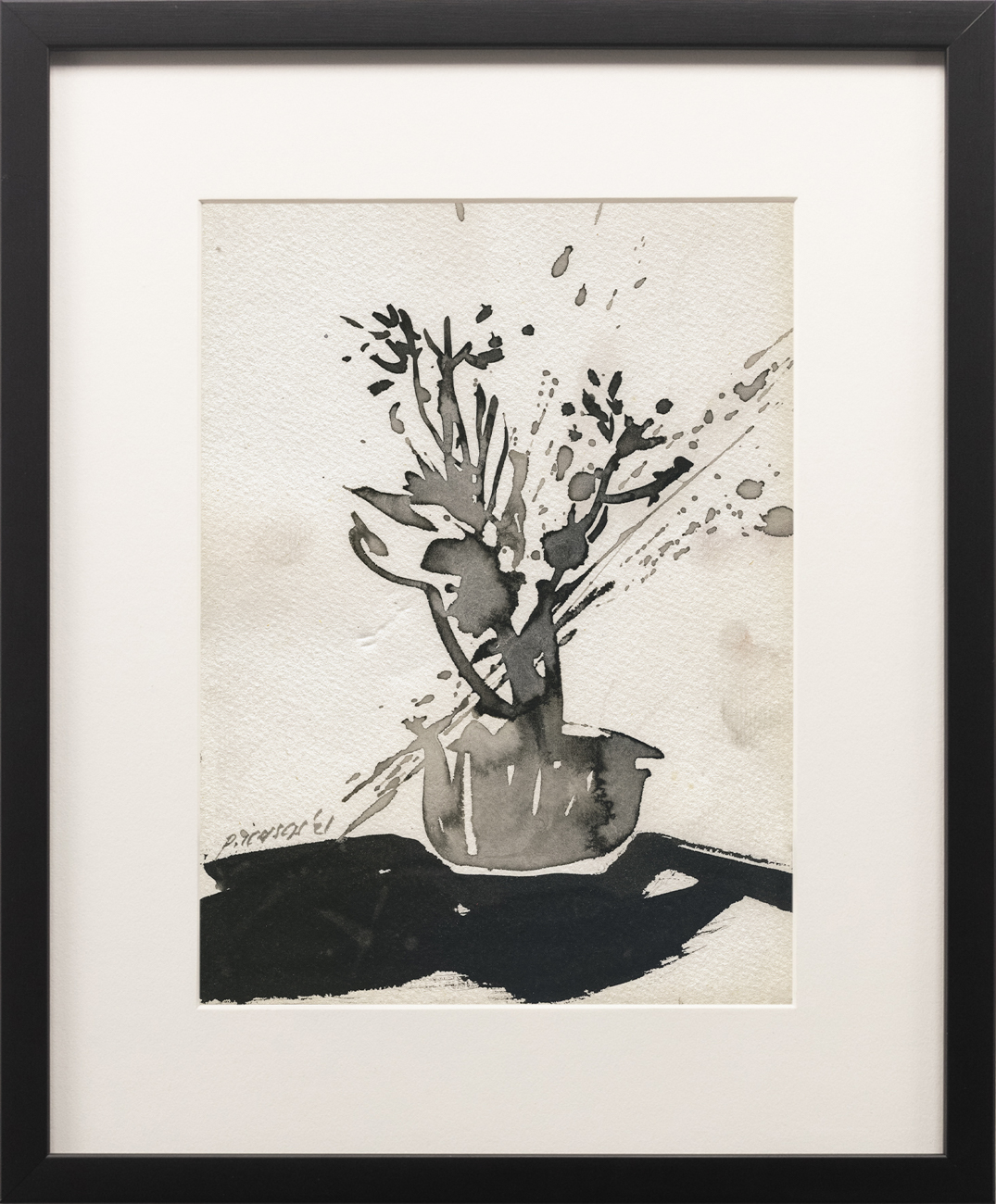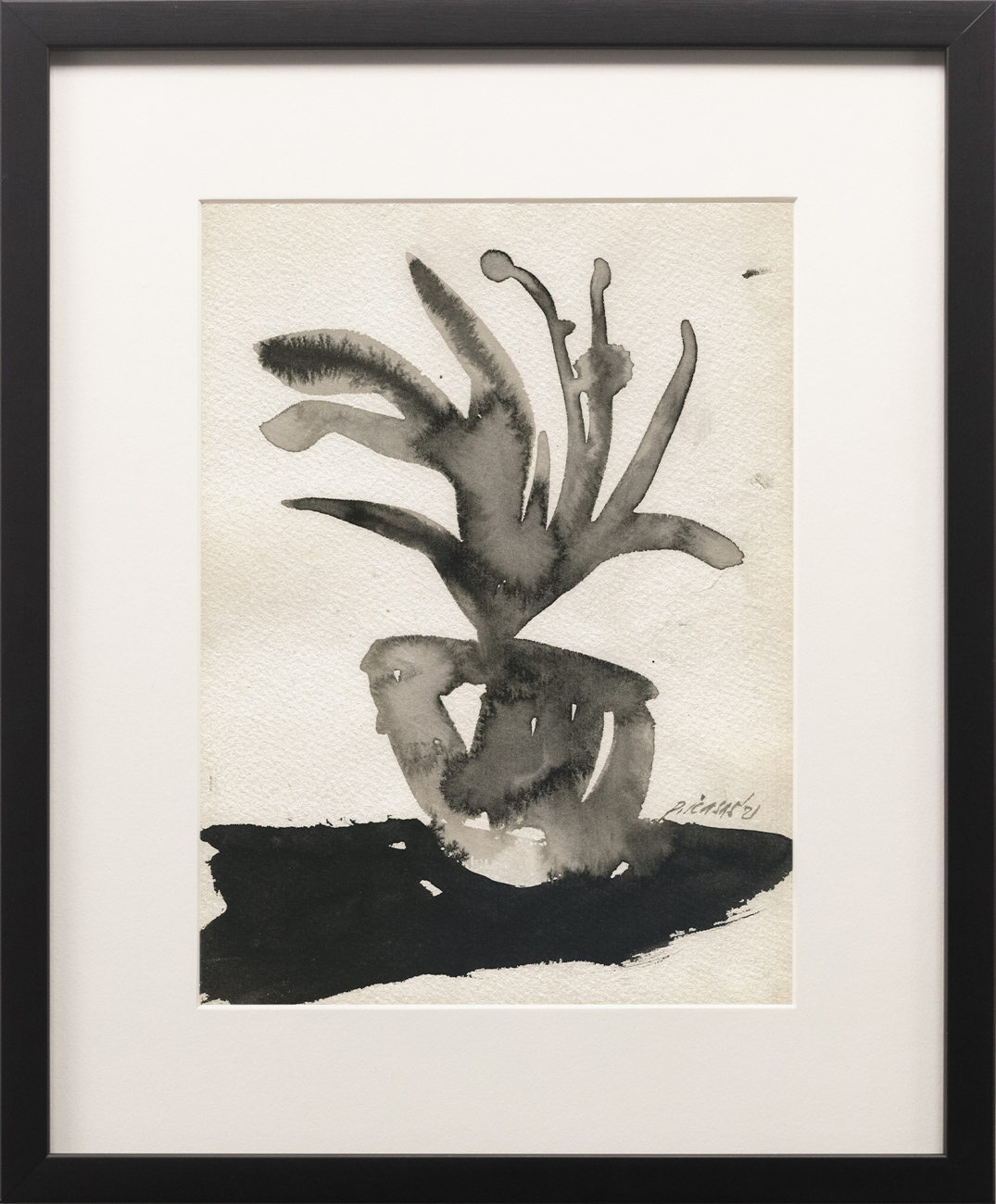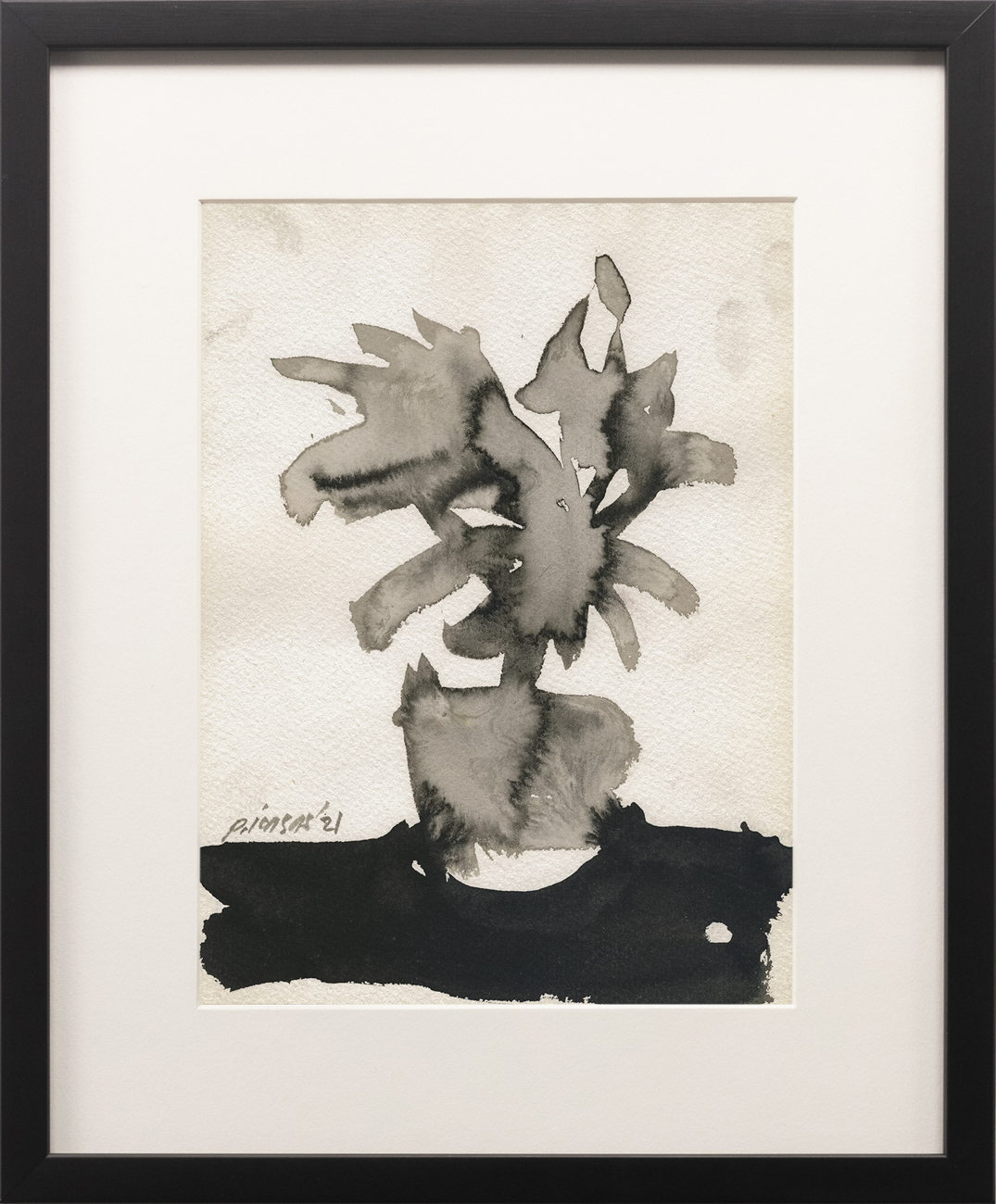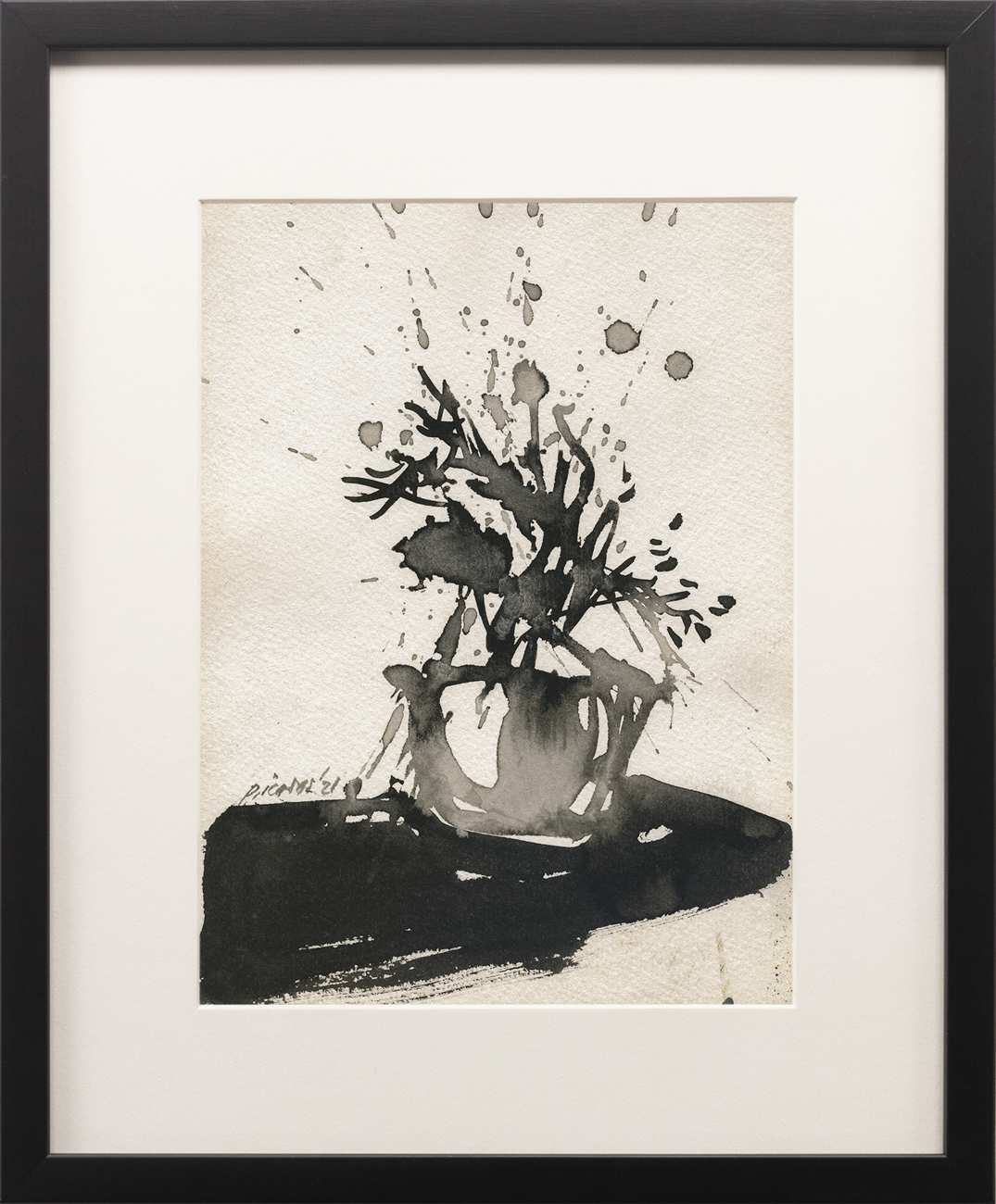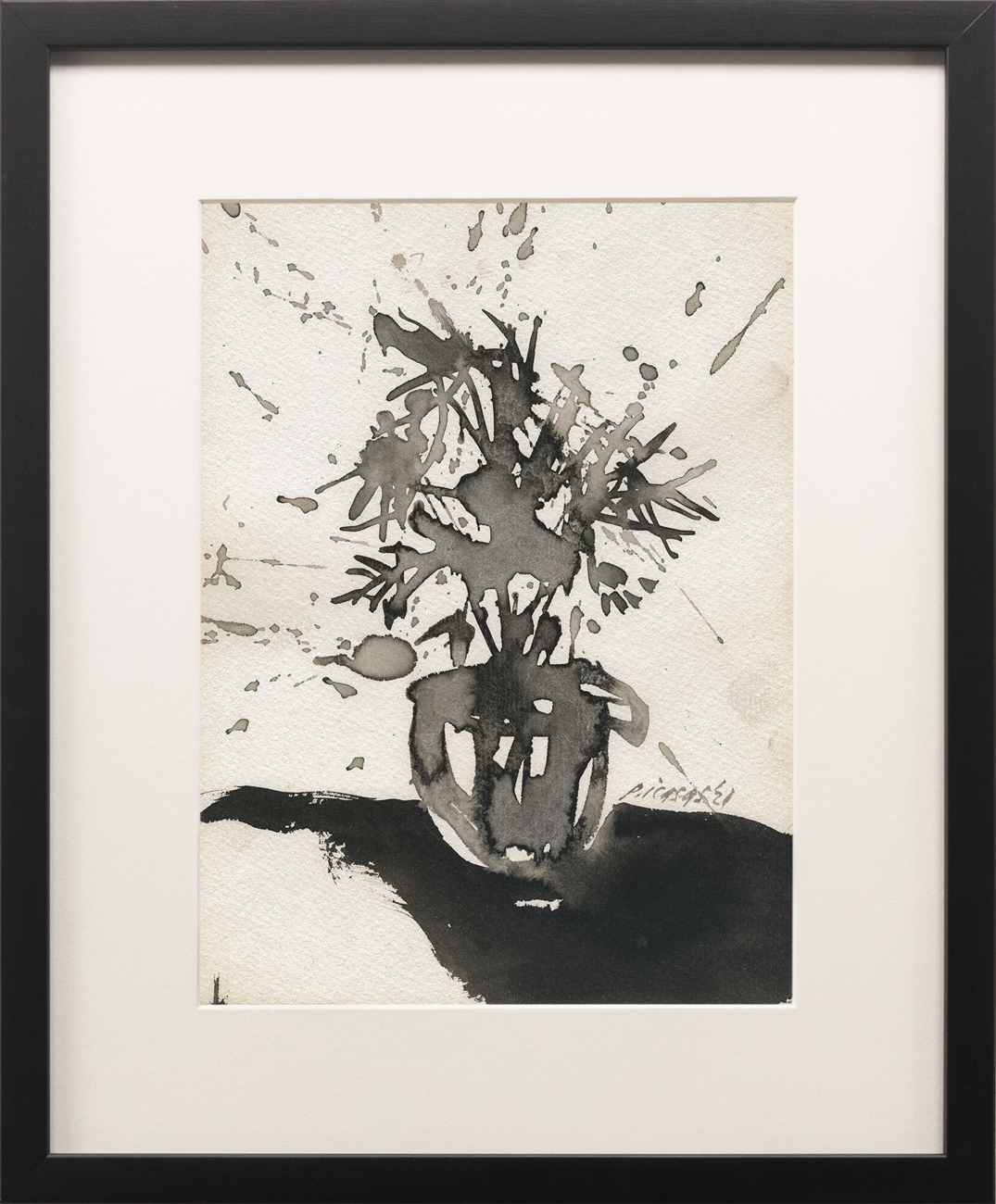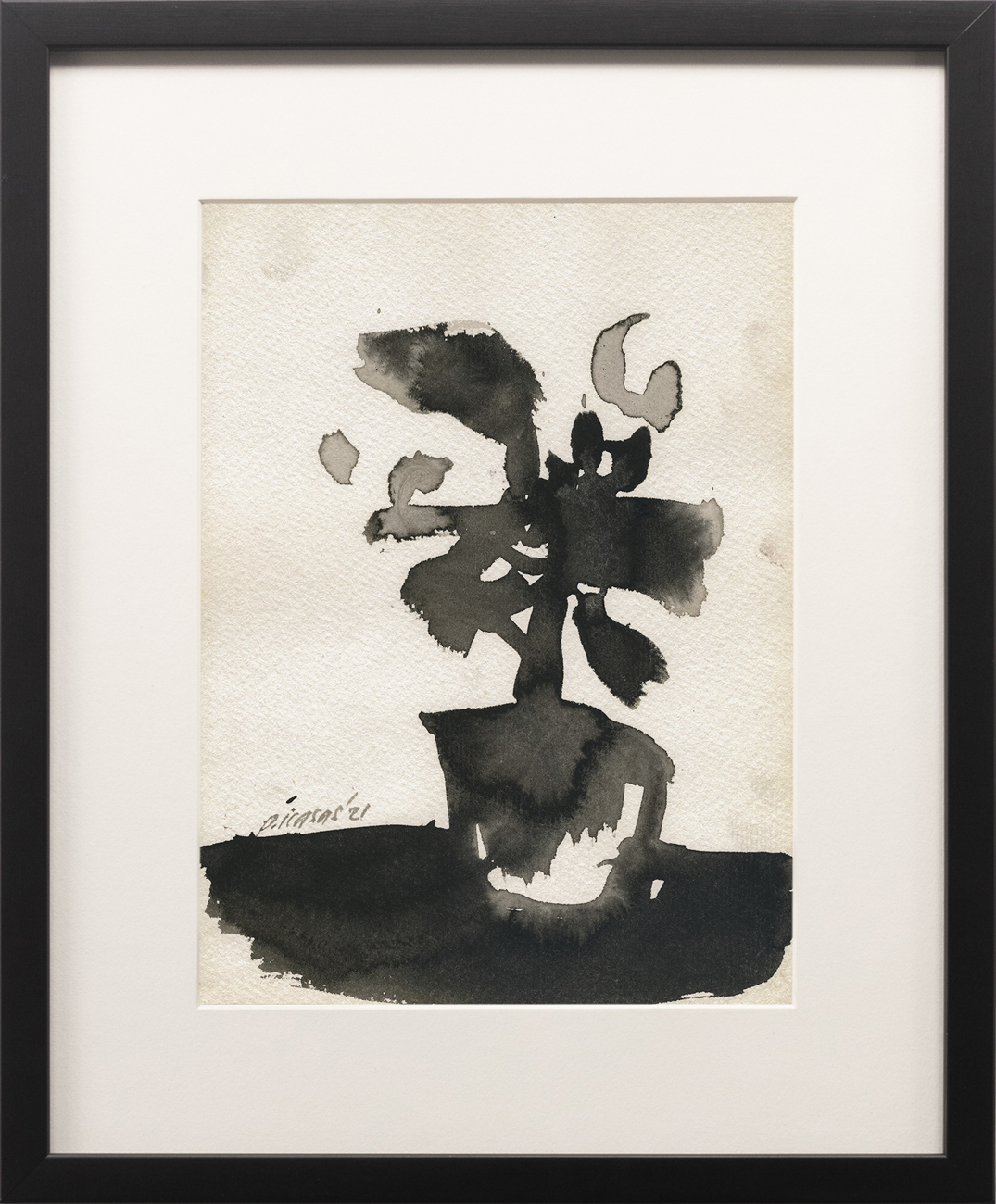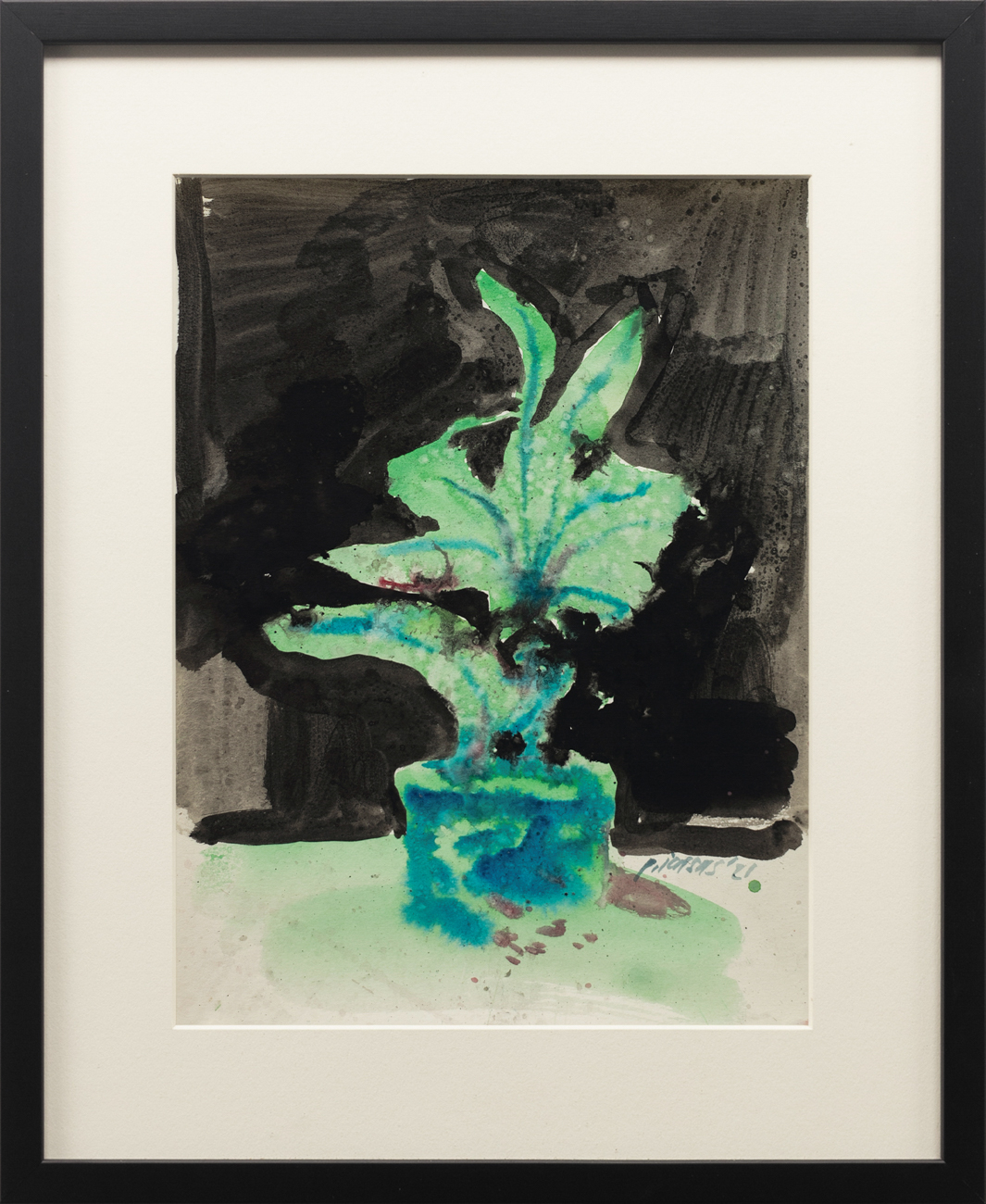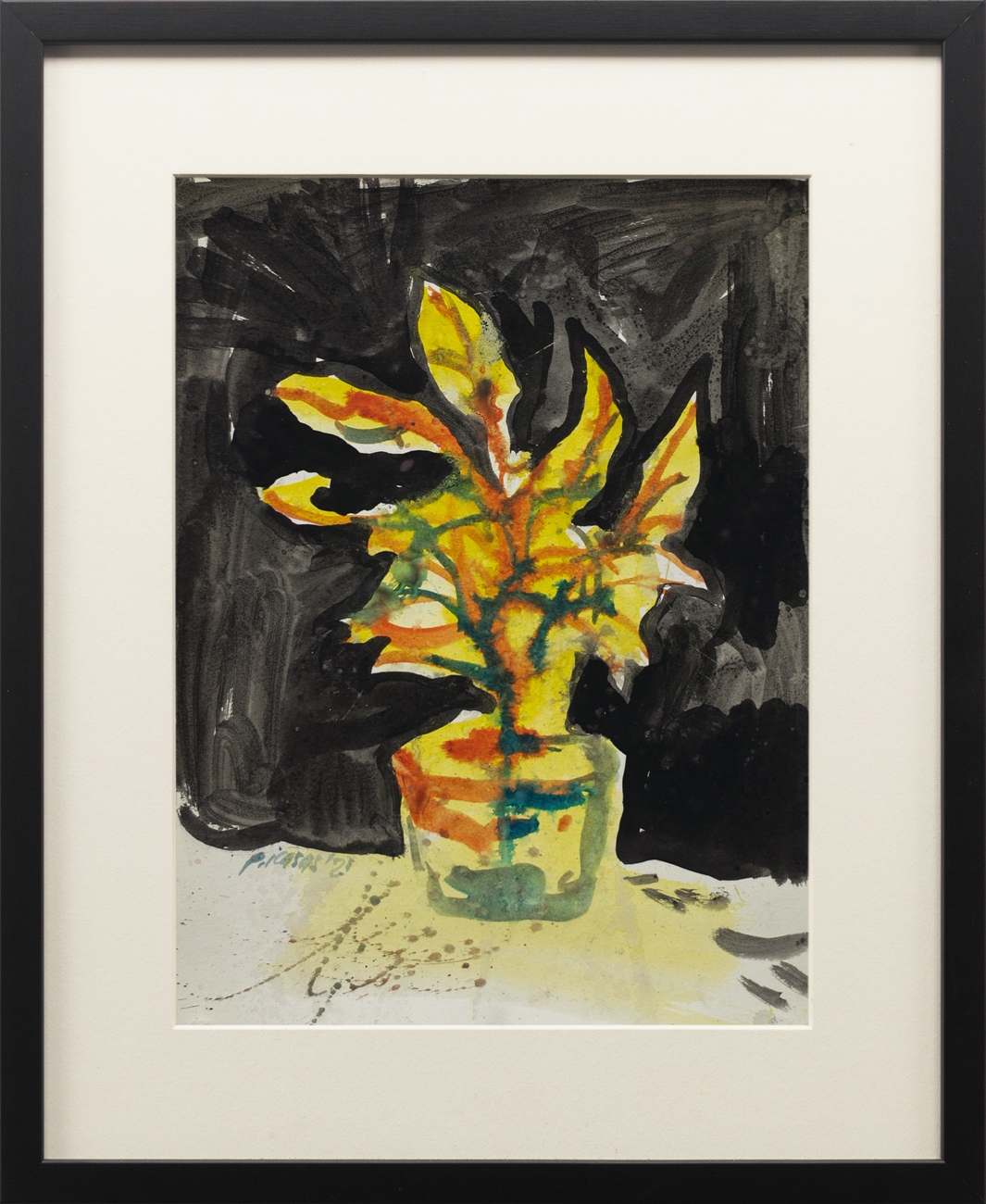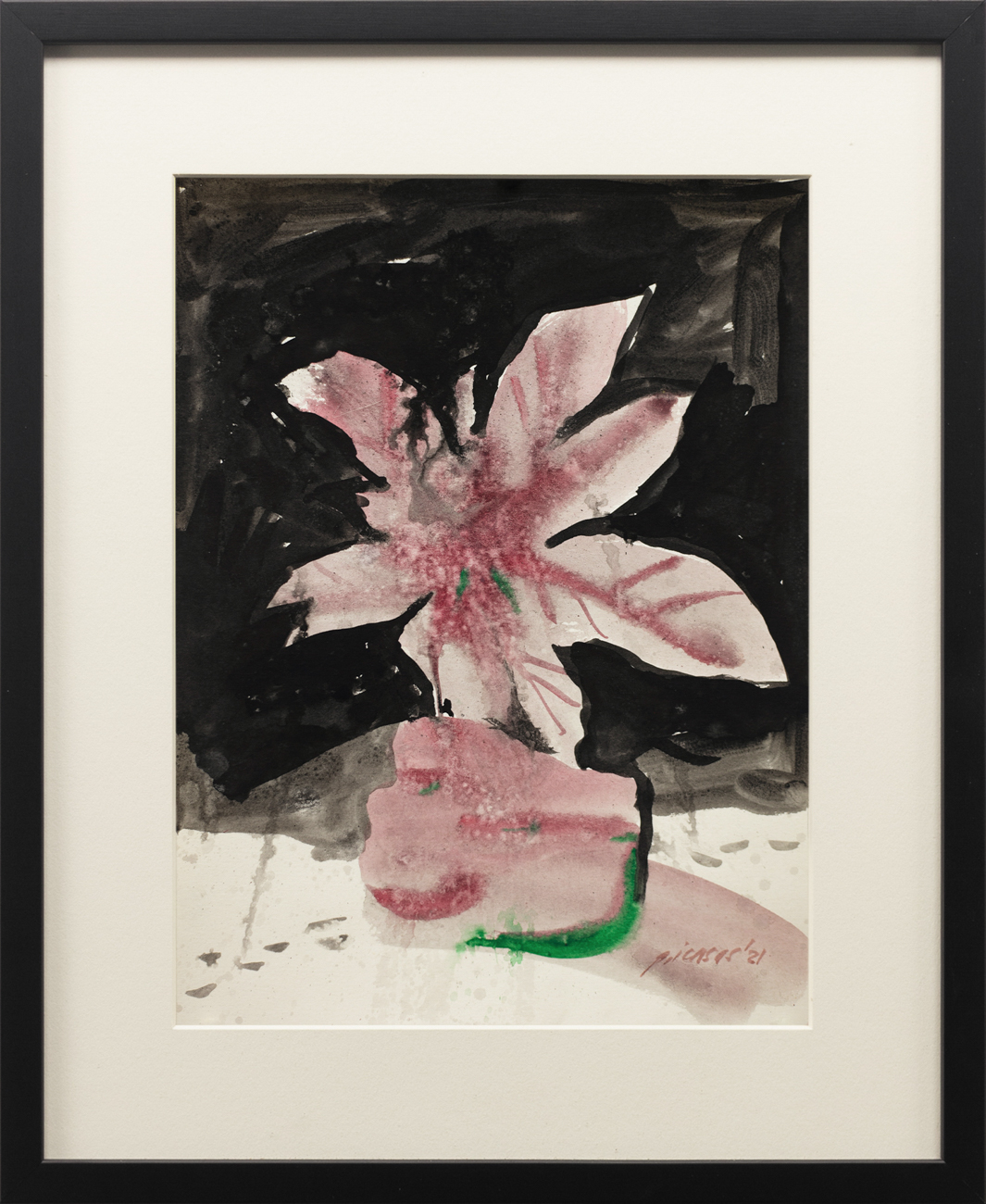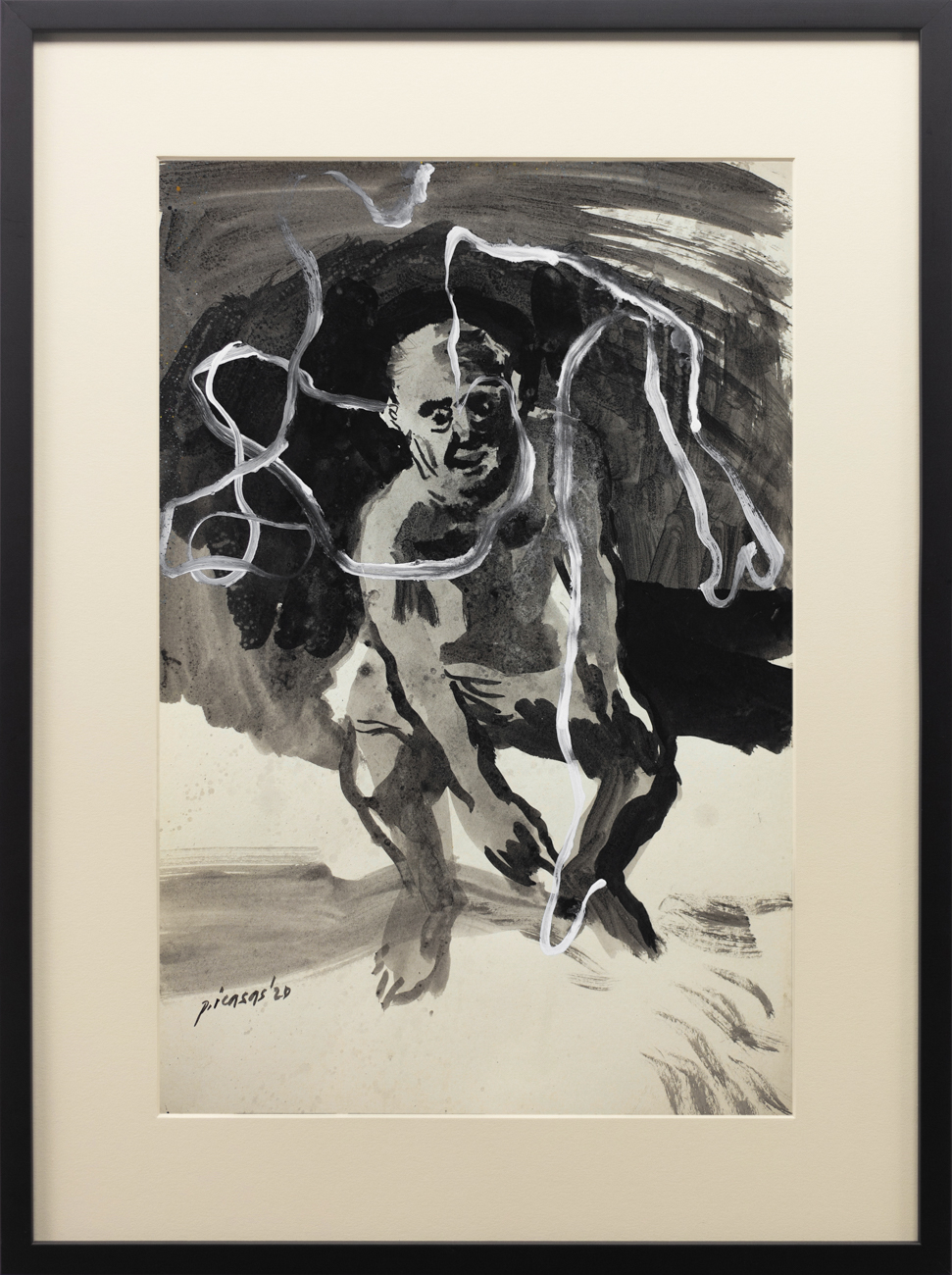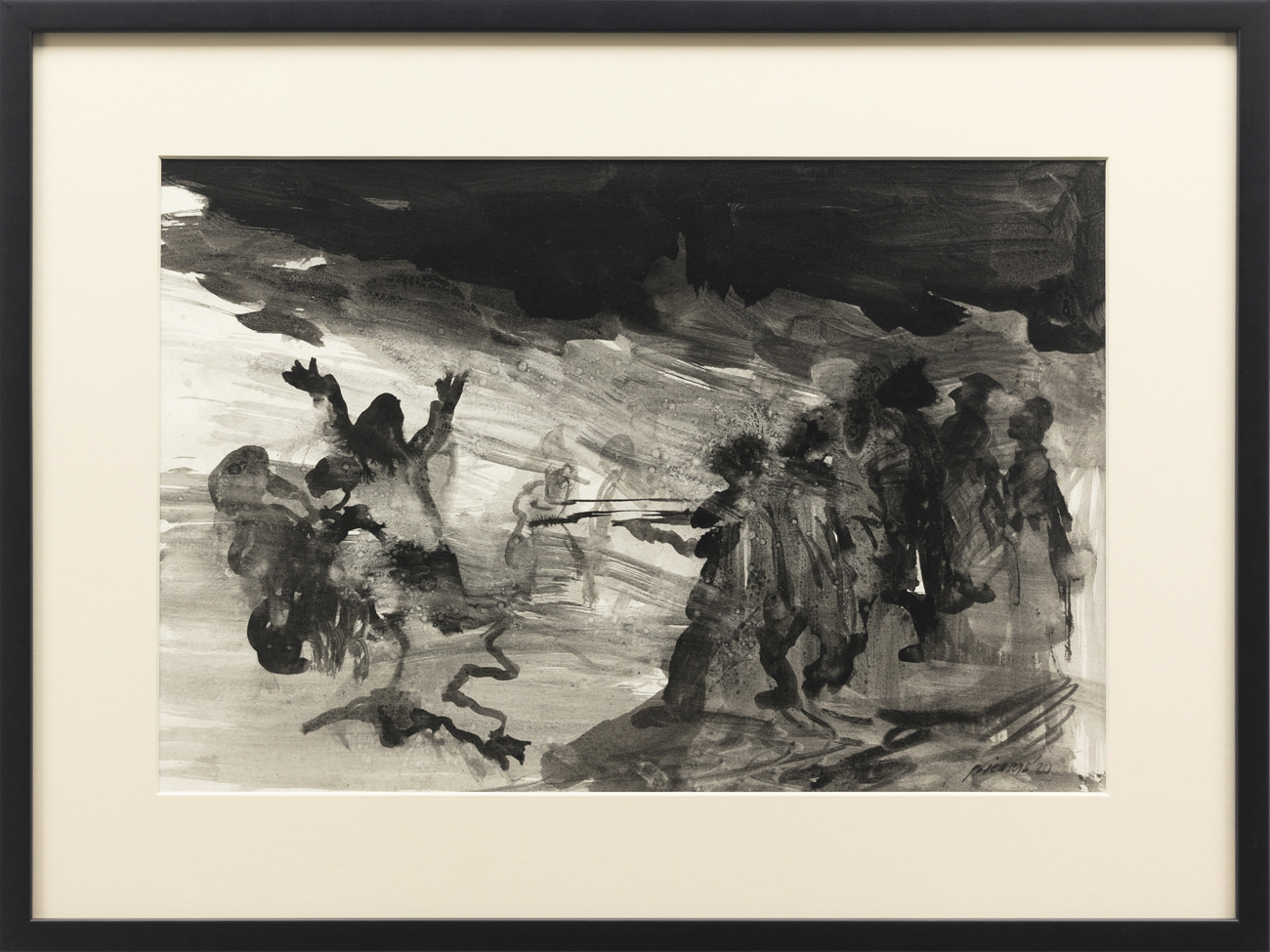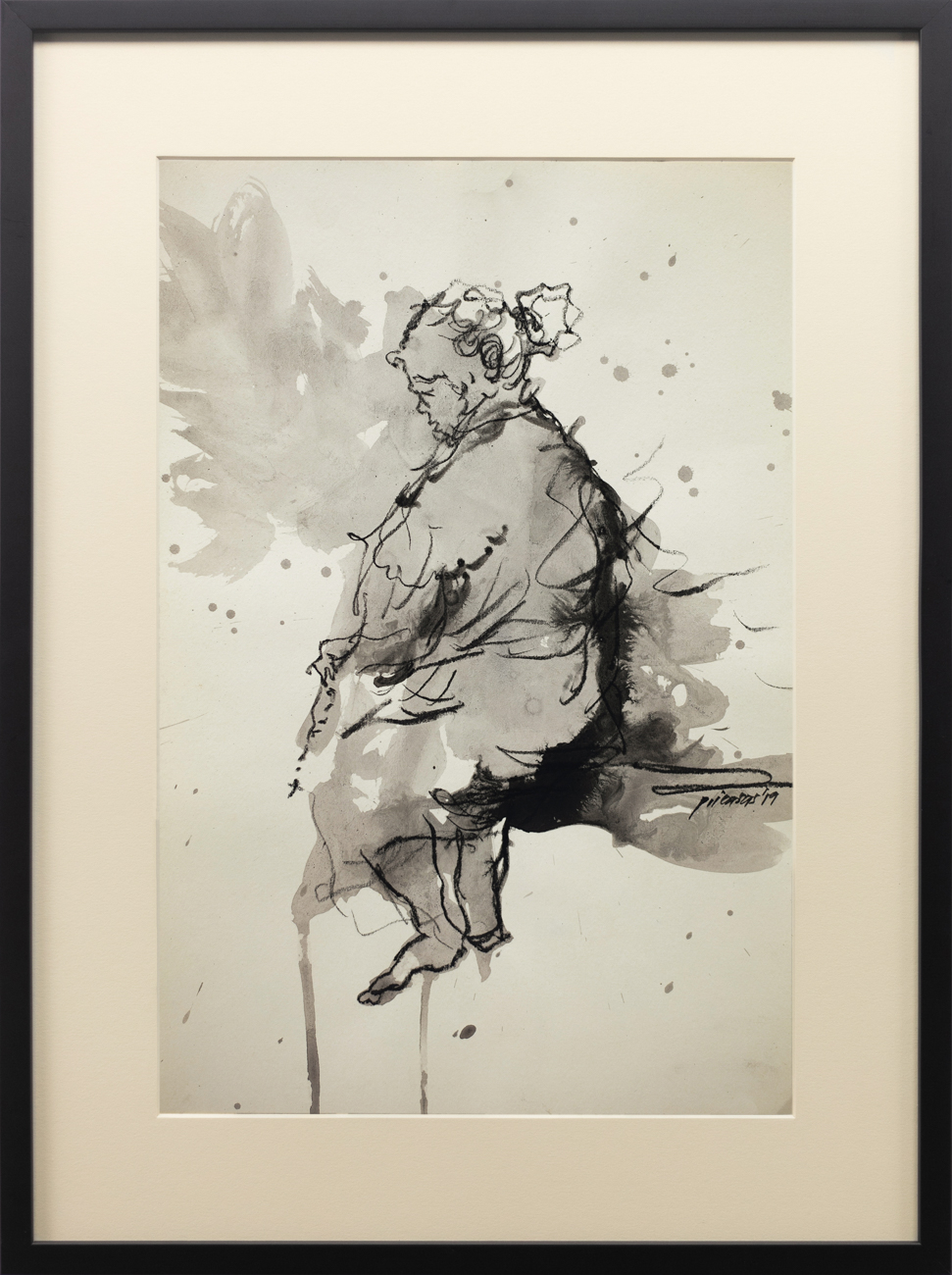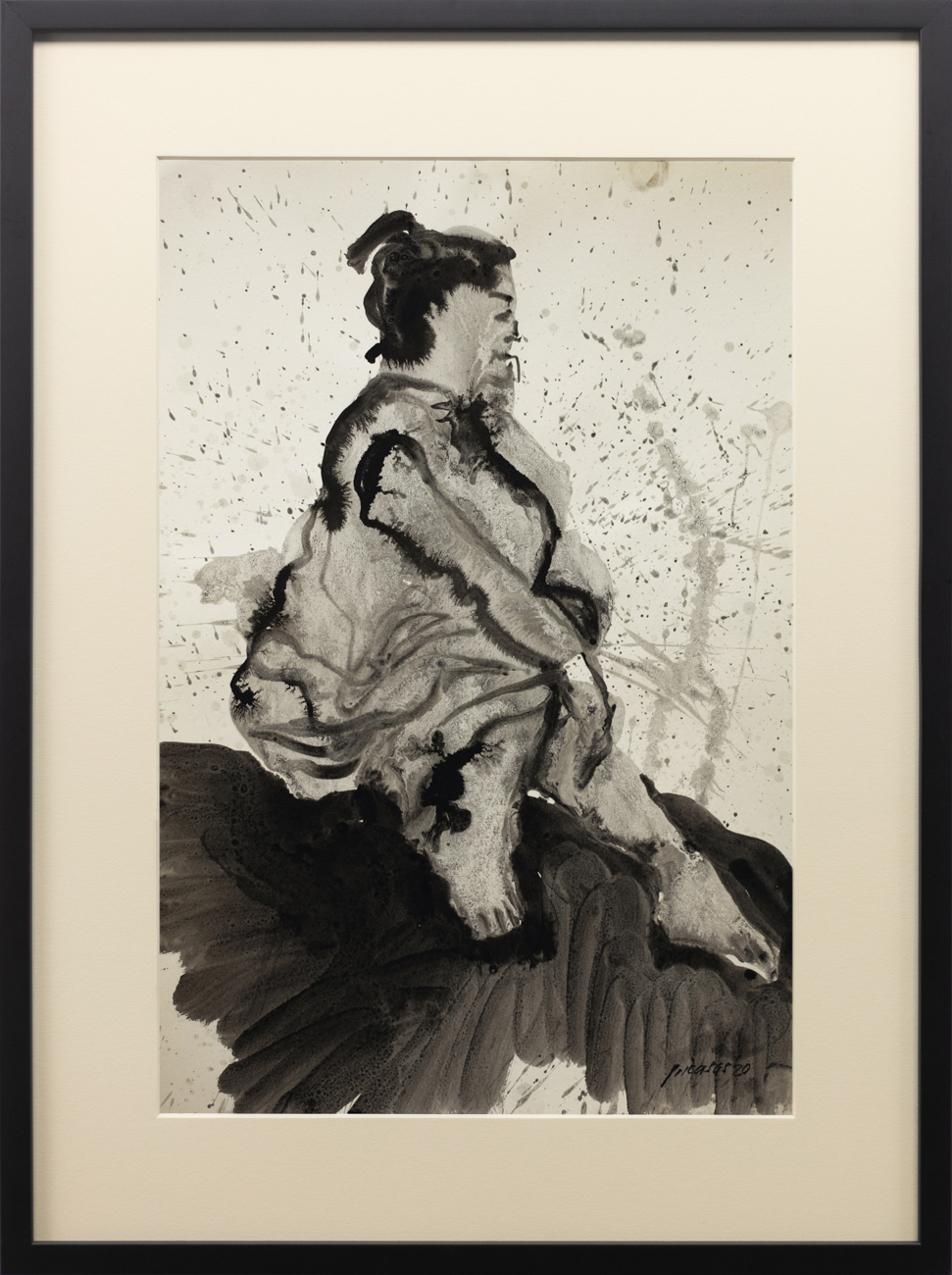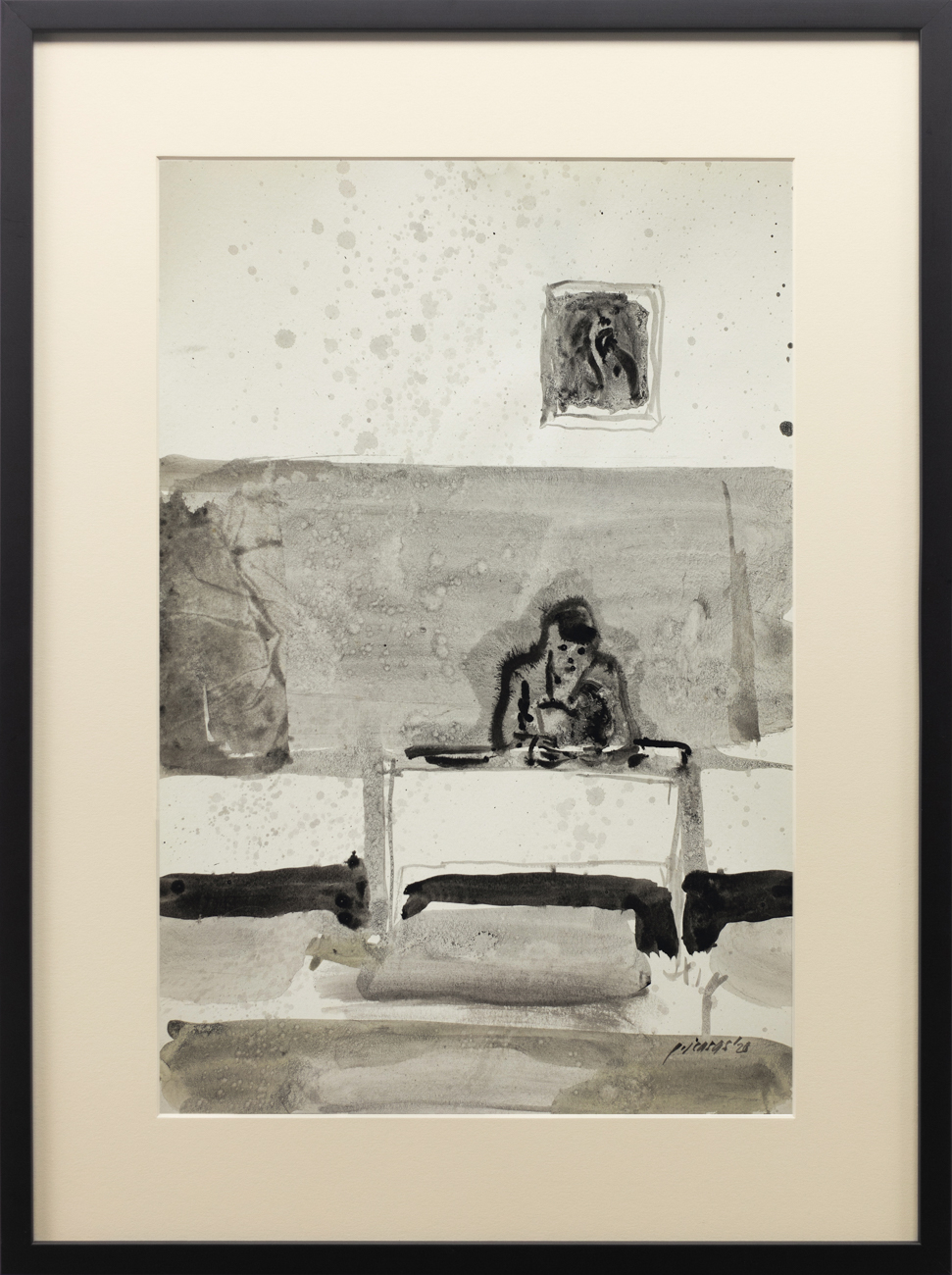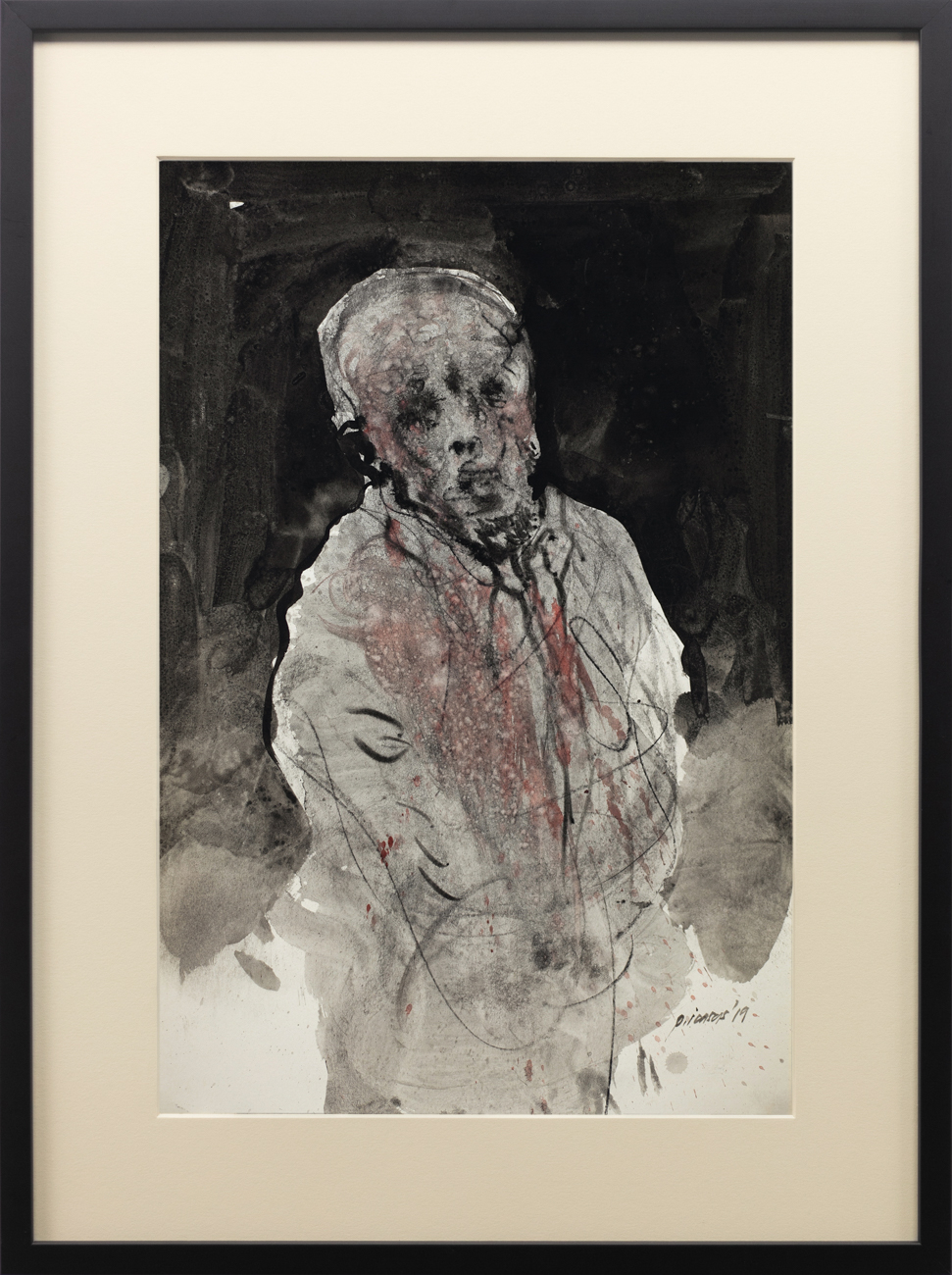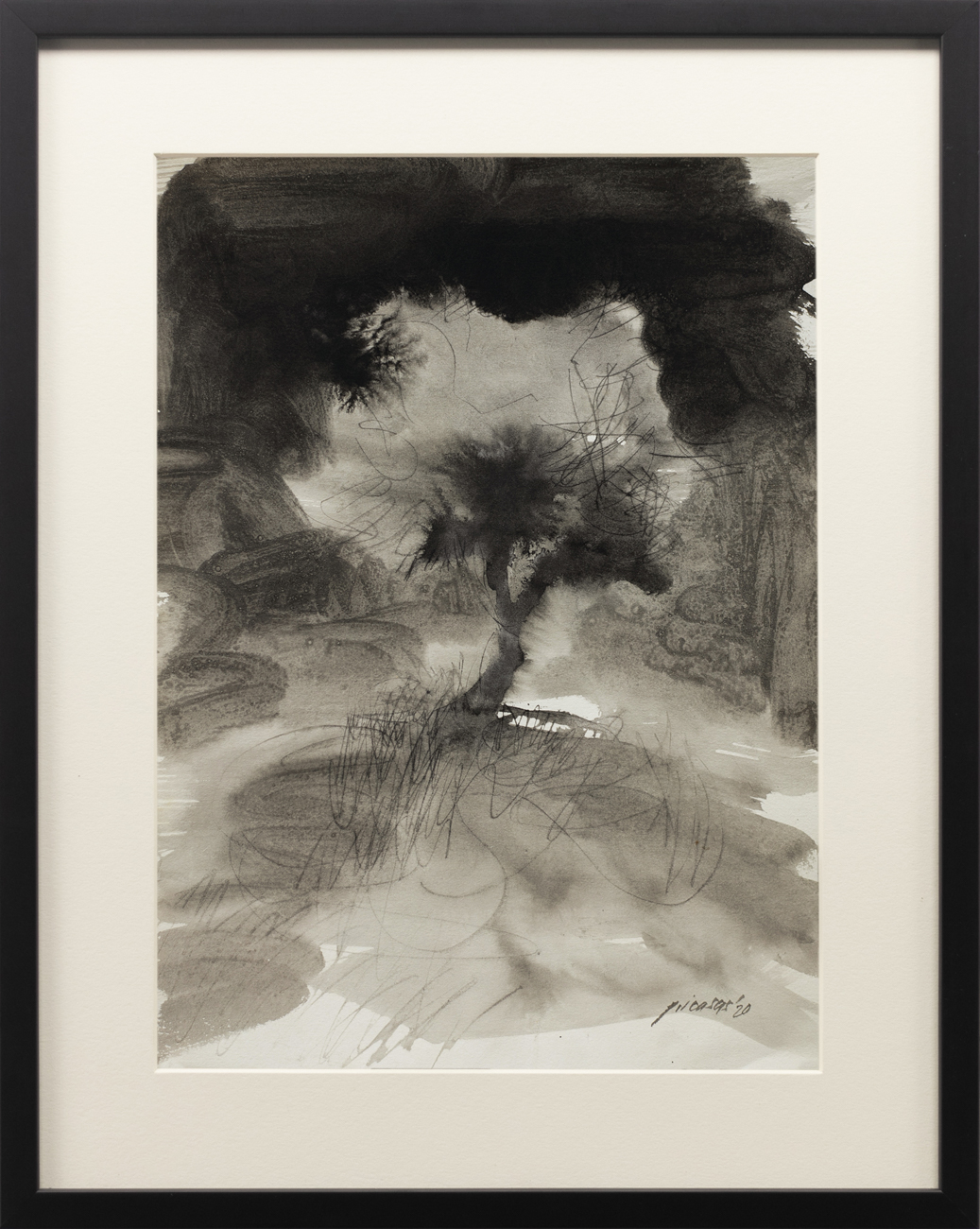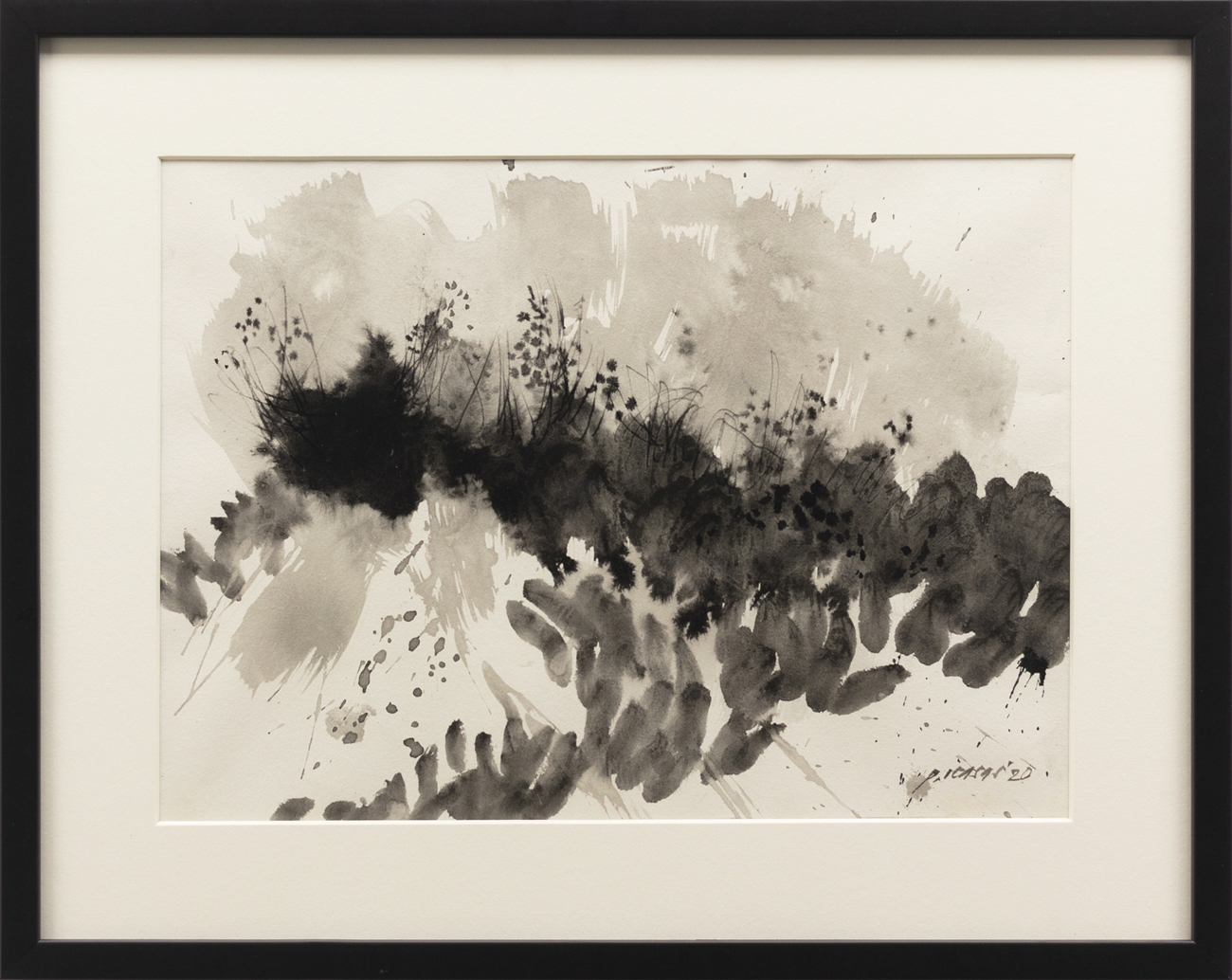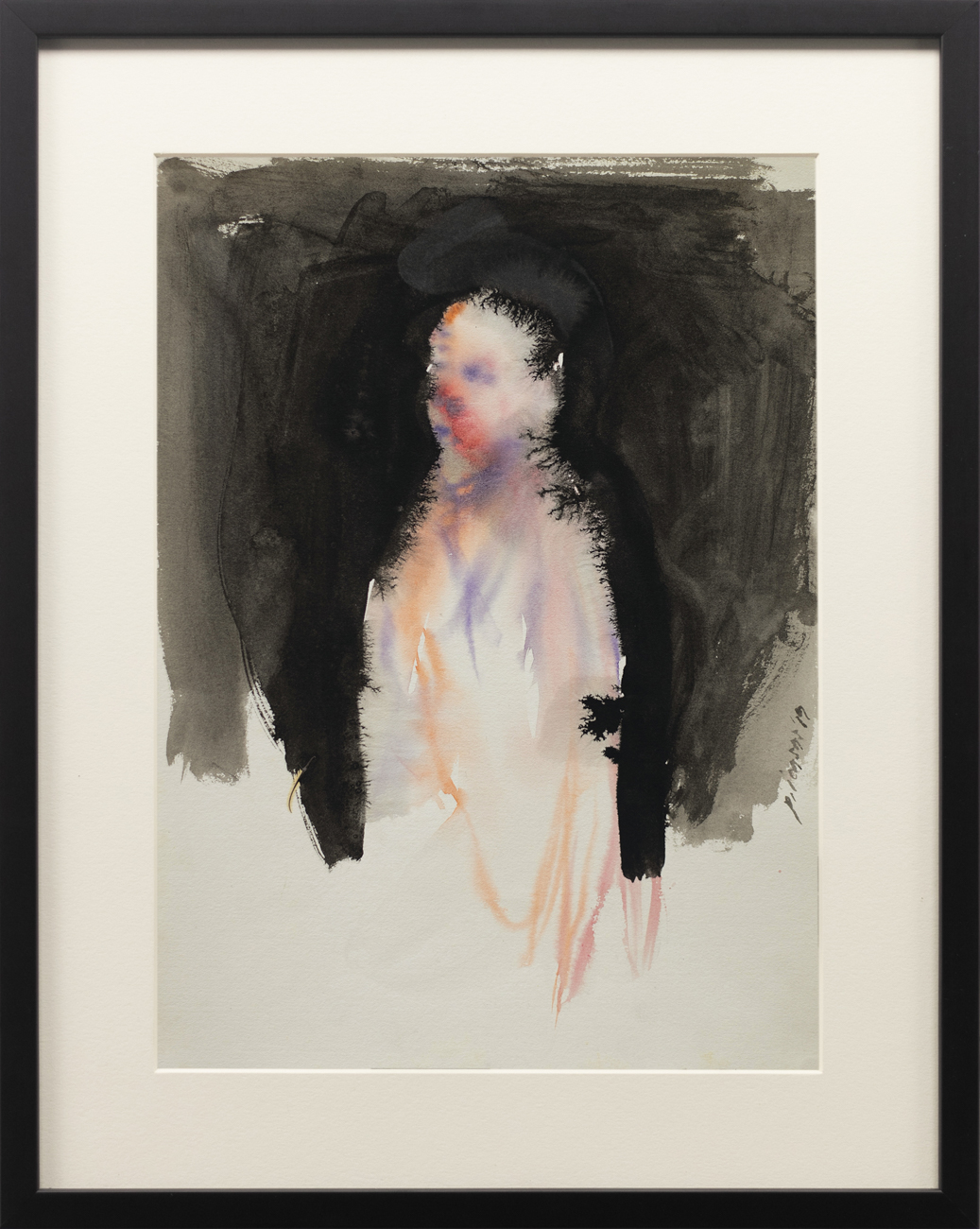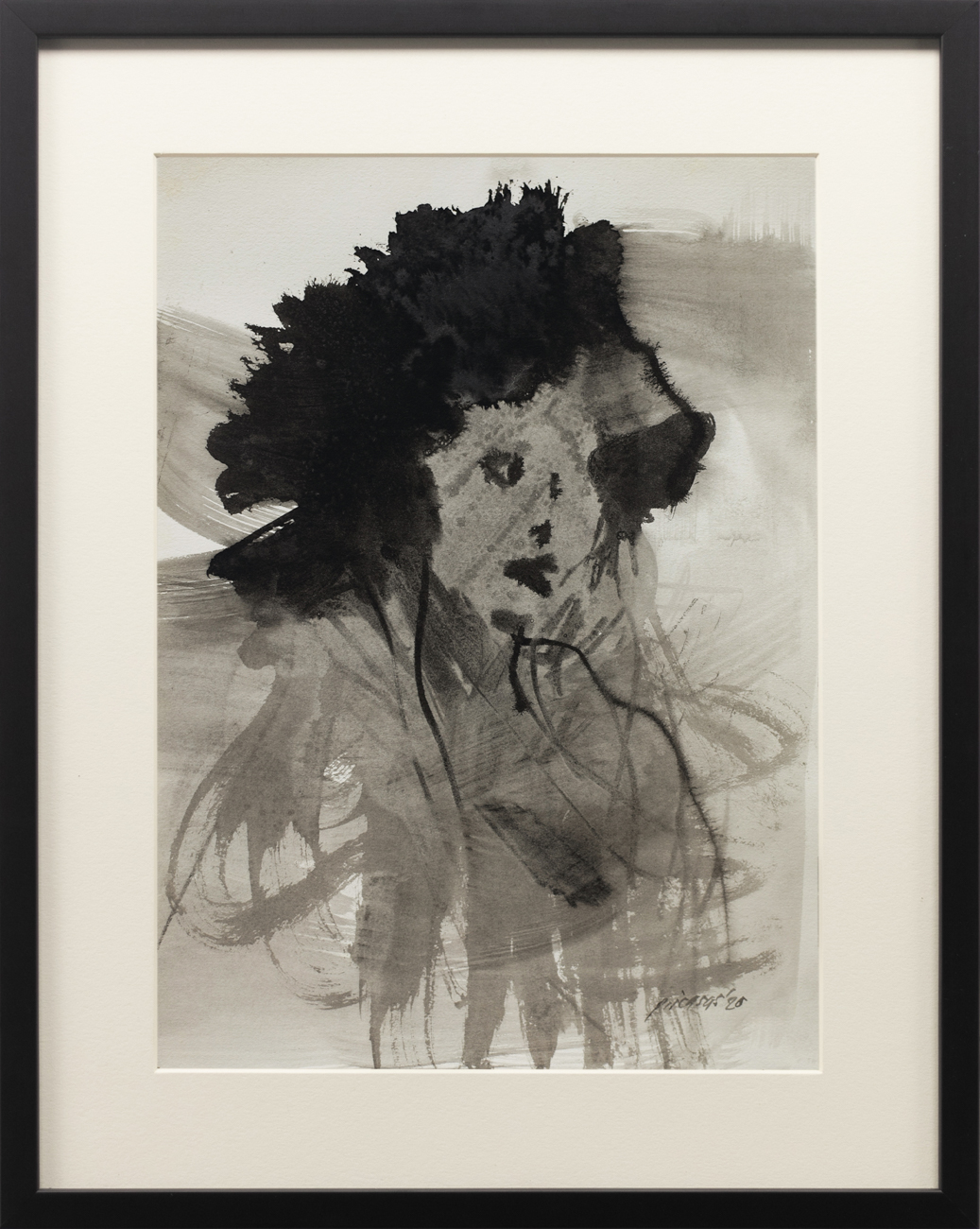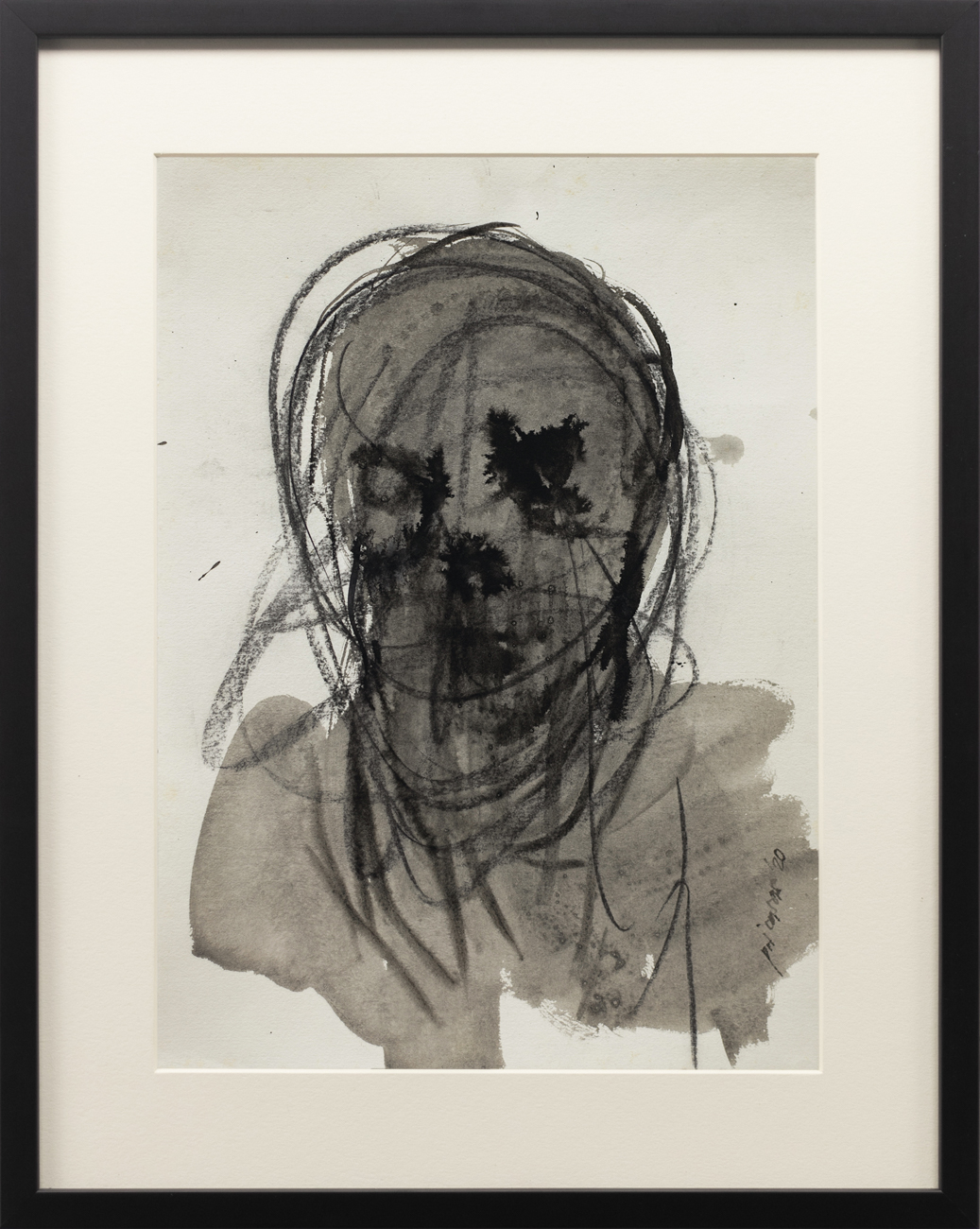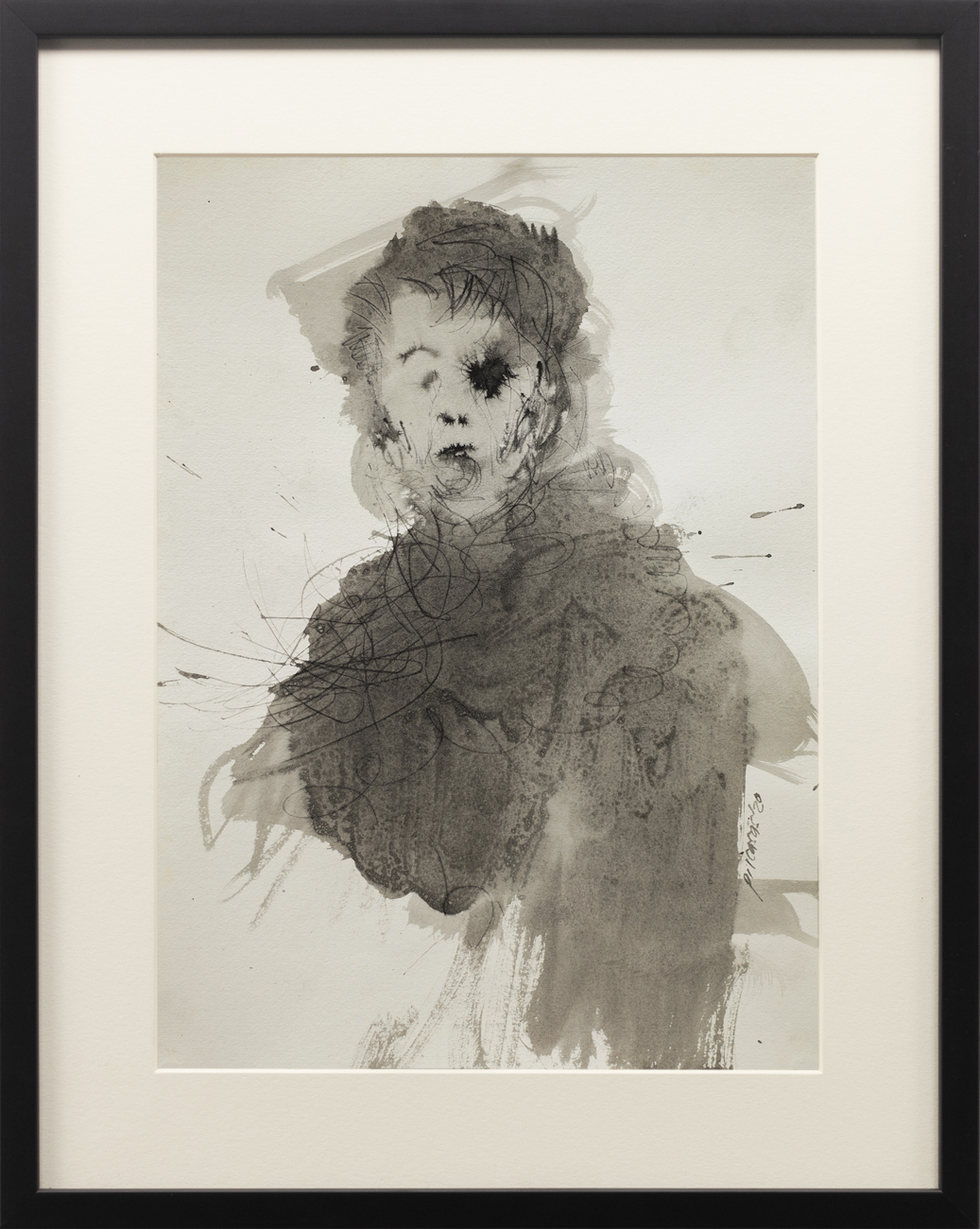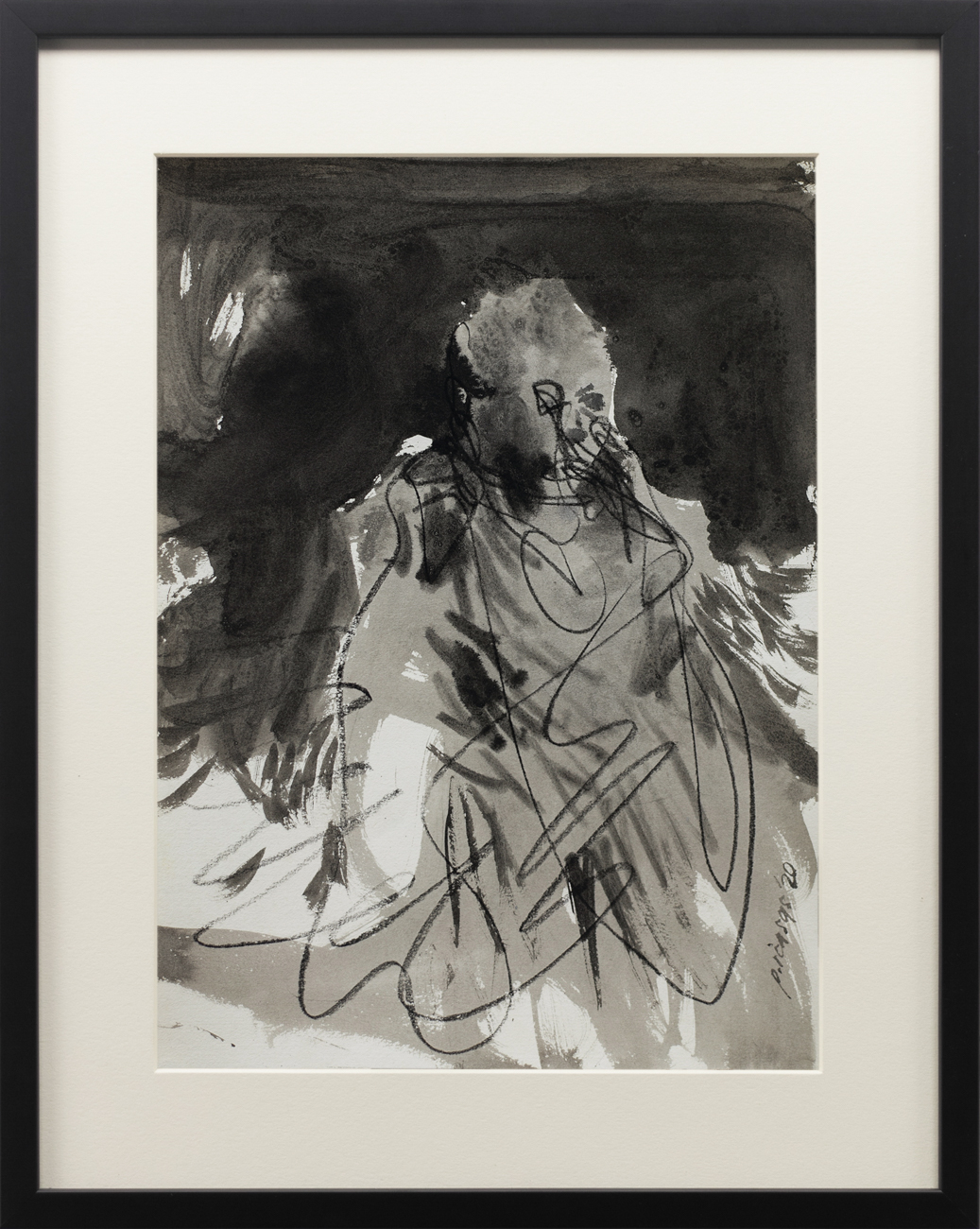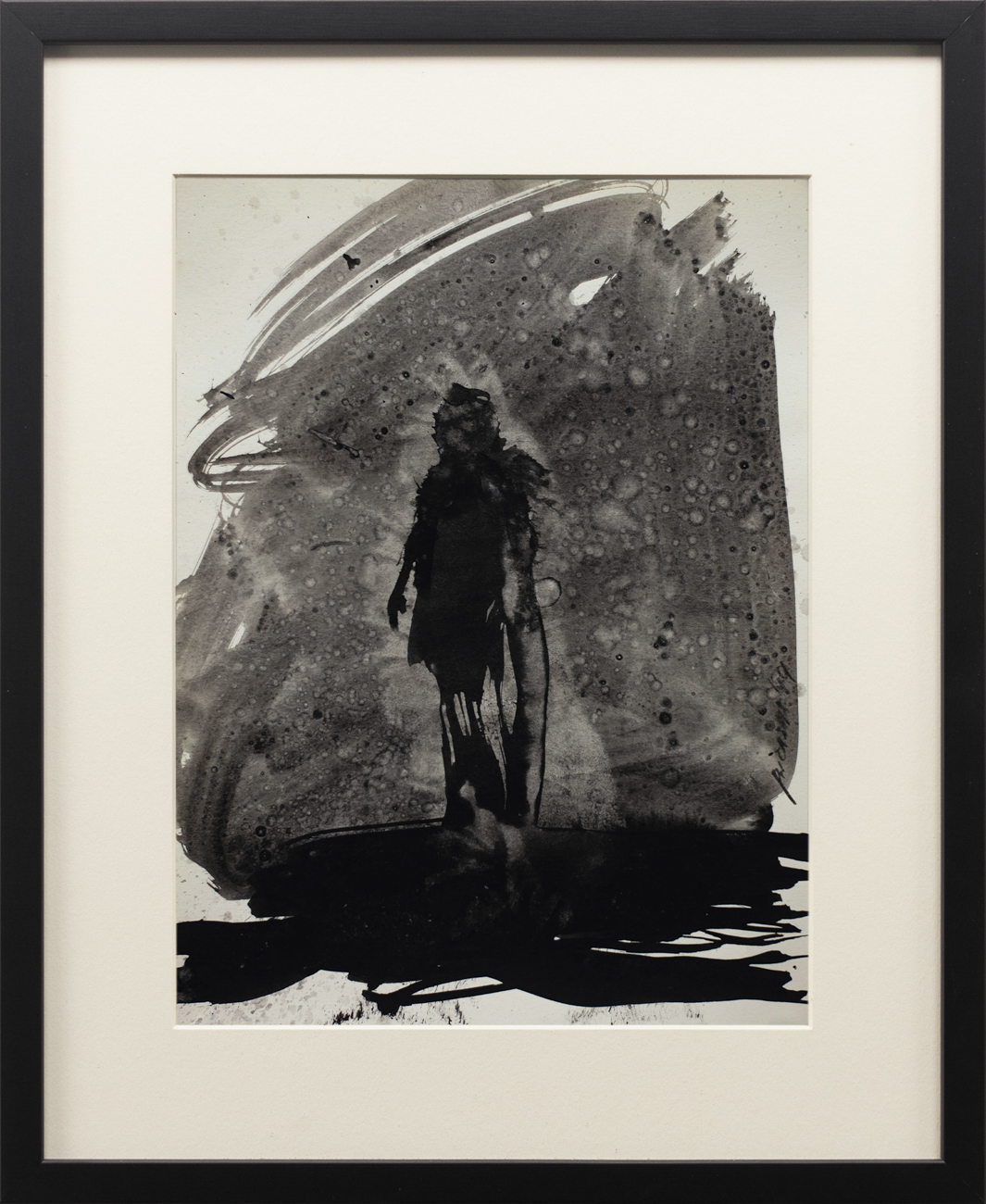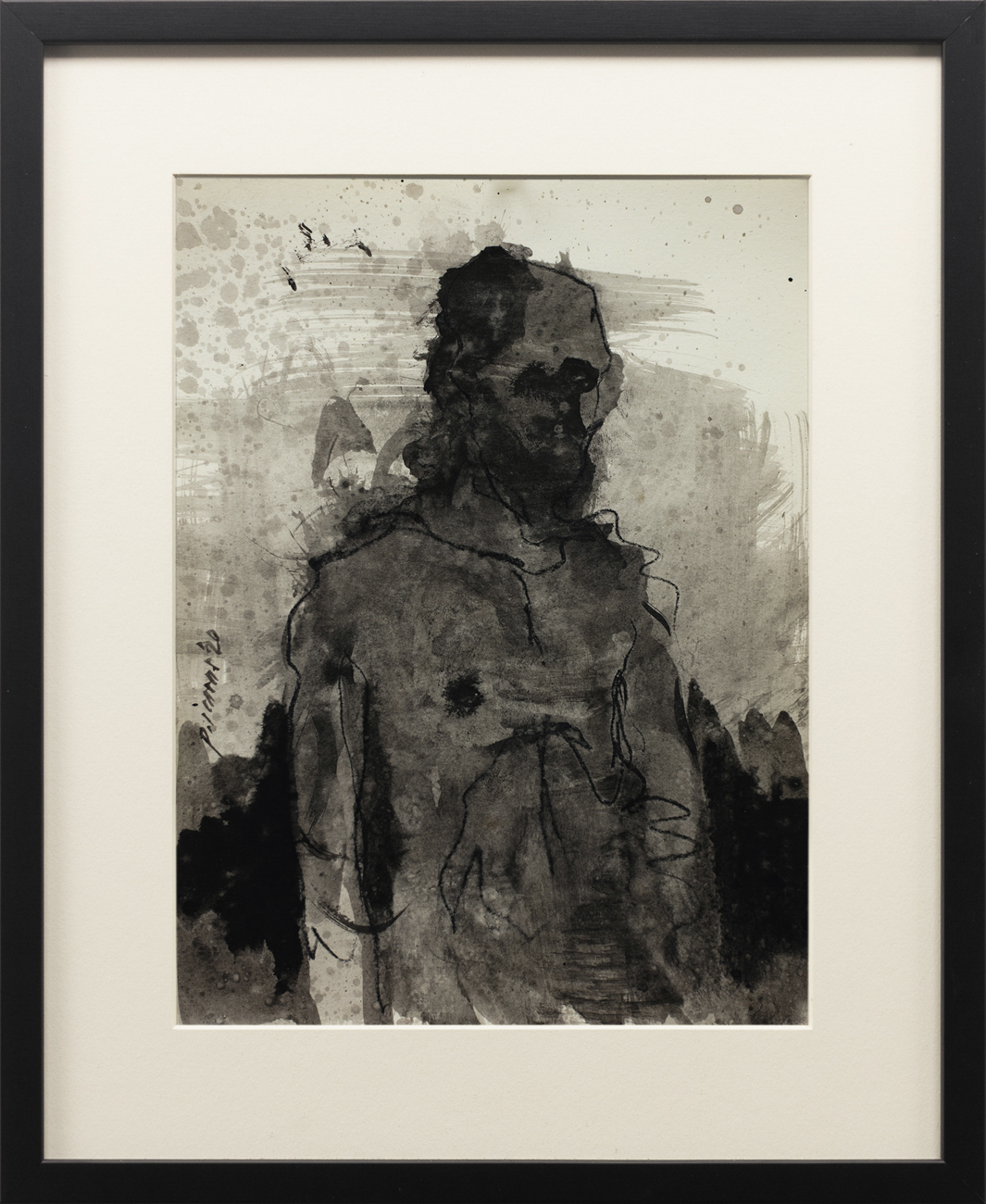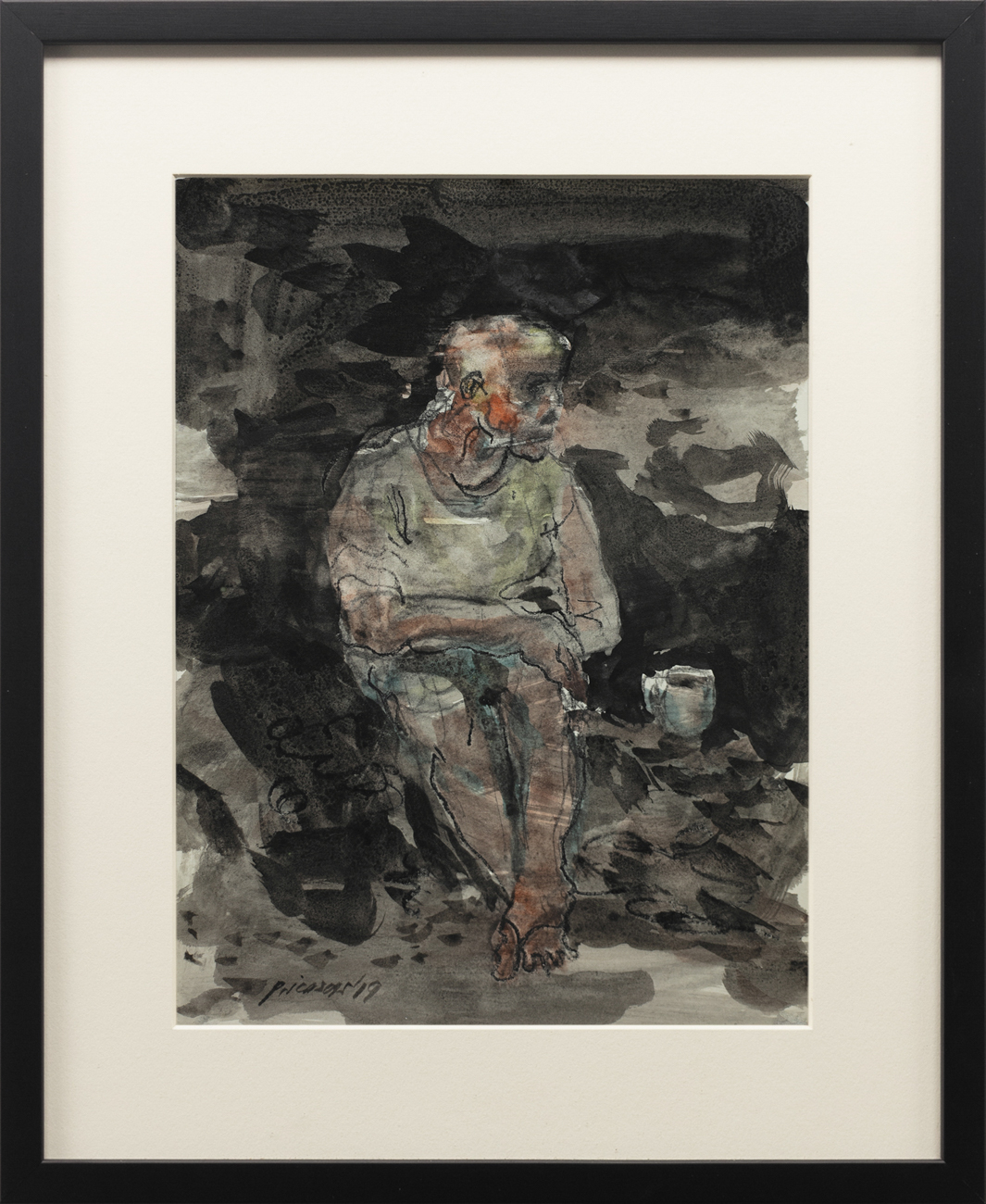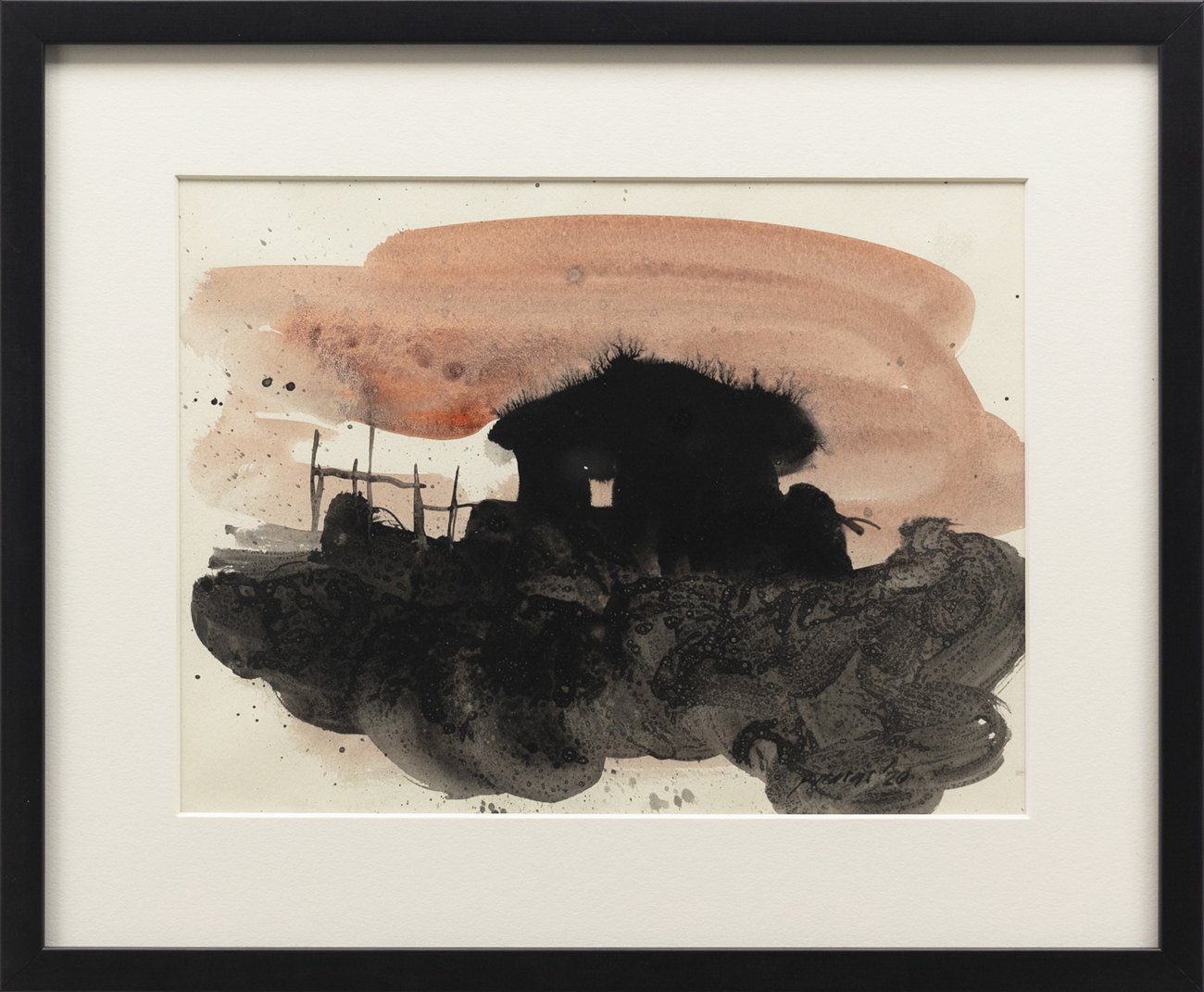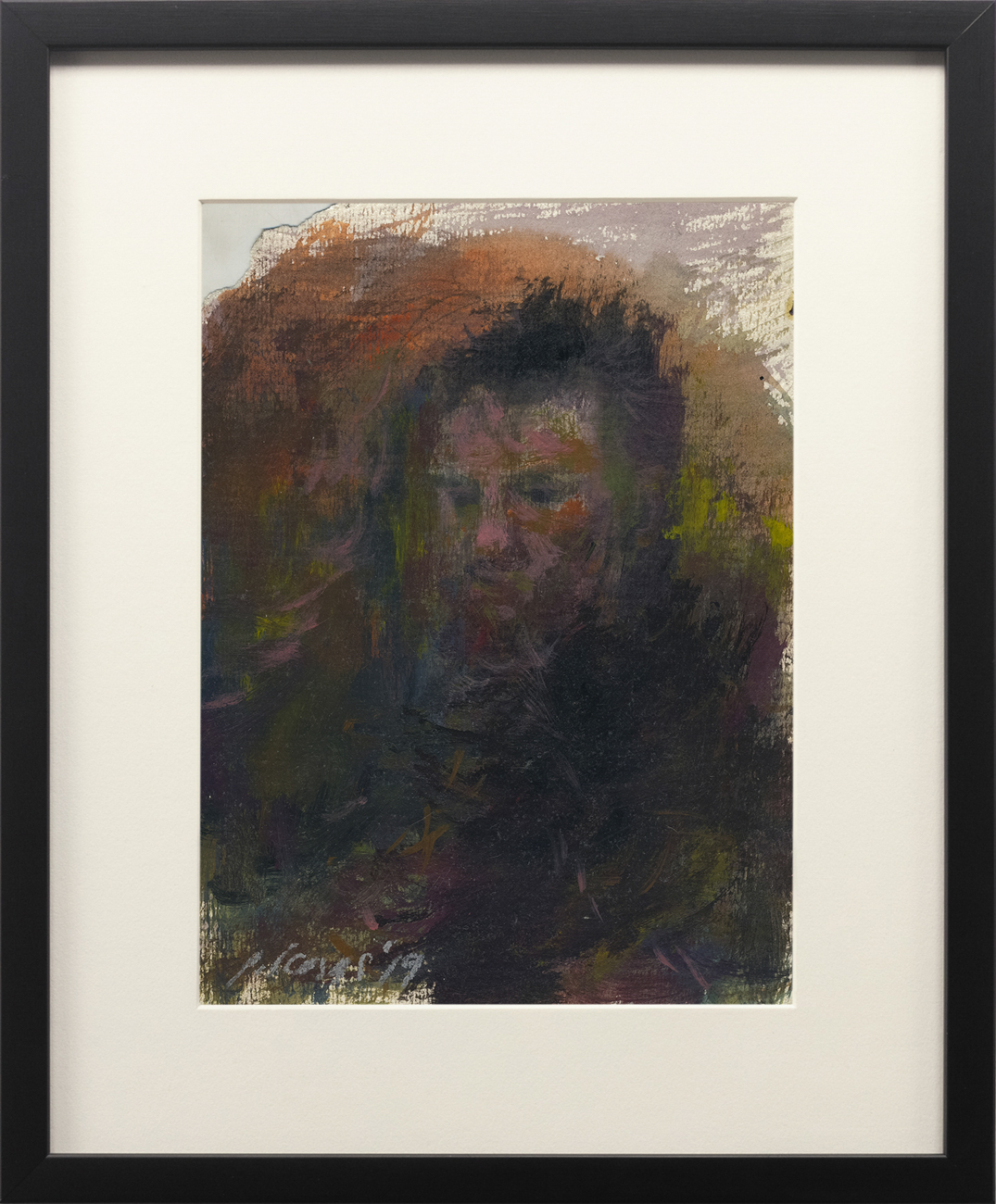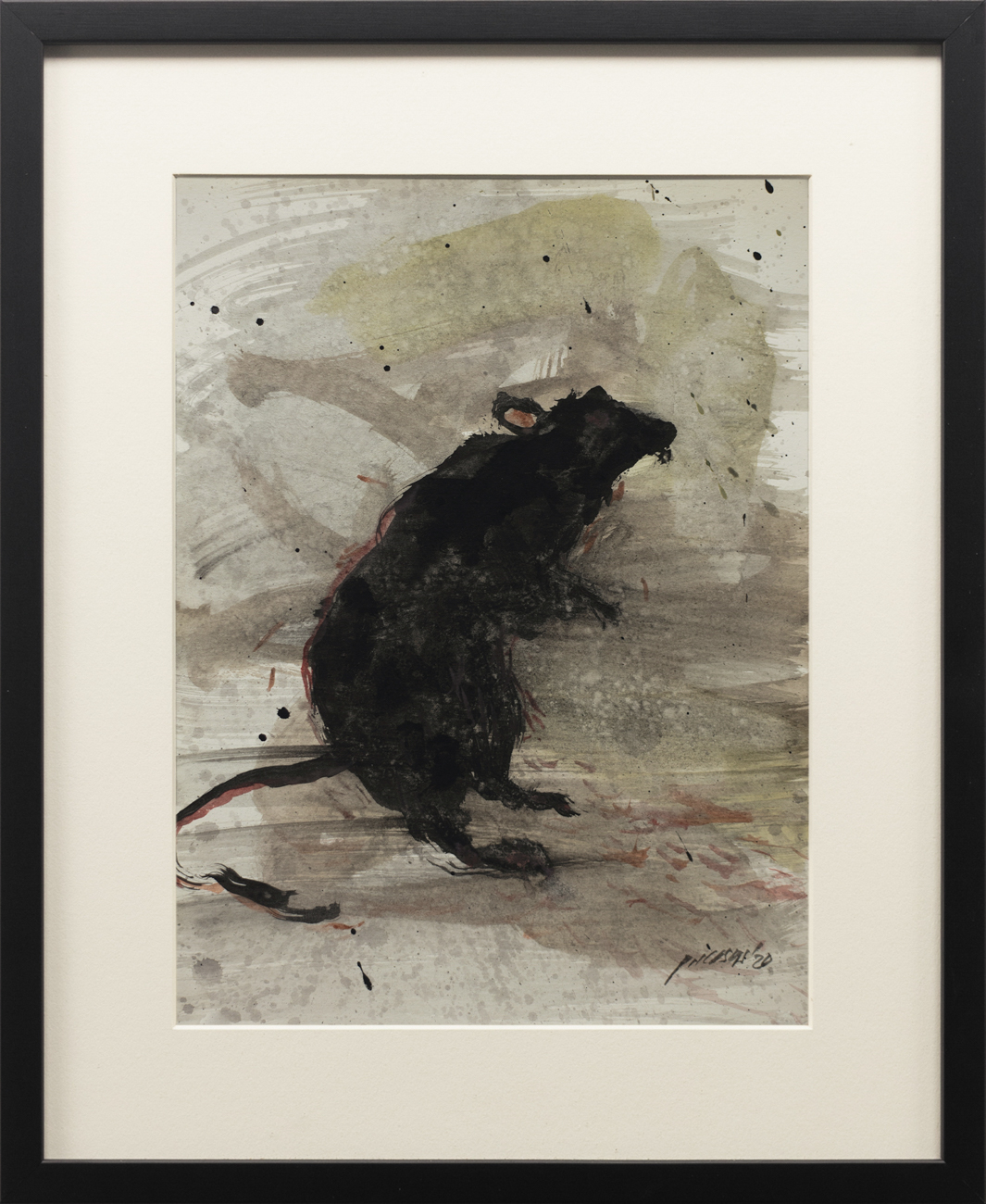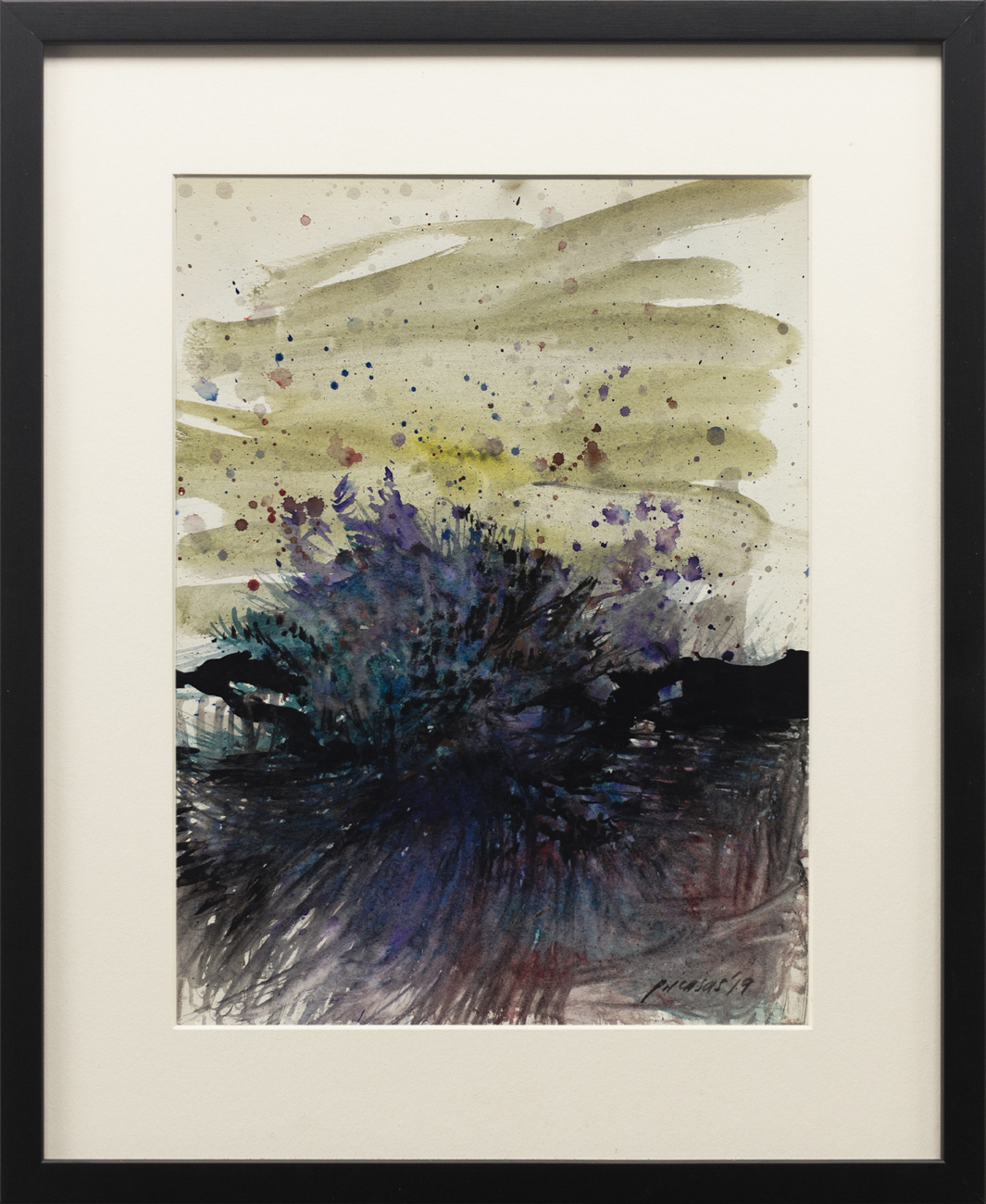
Excerpts from a Monotony Journal
Paolo Icasas
Paolo Icasas gathers a mindful selection of recent works on paper for Excerpts from a Monotony Journal, his first solo exhibition for Silverlens in its Online Viewing Room.
Primarily executed in ink and other water-based media, they offer a succinct counterpoint to his larger canvases, not just in medium or scale but more in approach. Paolo’s painting process often involves multiple waves of scratching, scraping, and erasing, as he reworks layers upon layers of paint until the actual work finally emerges. It’s a labor-intensive process that takes time to bear fruit. In contrast, his paper works are distinguished by a sense of fluidity and swiftness, in parts closer to drawing or sketching, yet still very much rooted in painting.
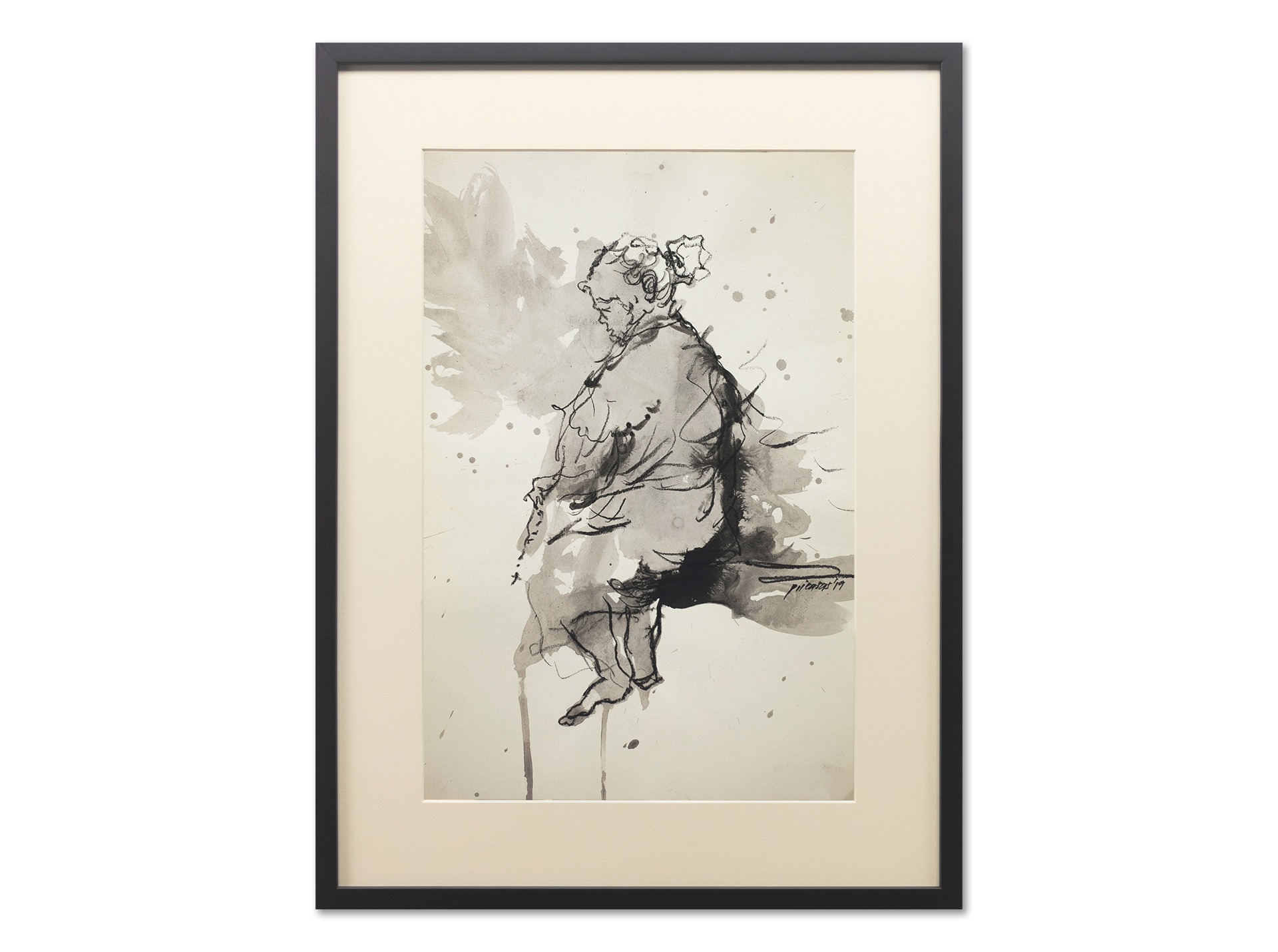
Paolo Icasas, A prayer for our children, 2019. ink on paper.
Initially conceived purely as an exercise, Paolo began making these quick and highly gestural pieces early each morning to somehow get his hand loose, as he eases himself into the flow of the workday. It never occurred to him that collectively, they’ll become a considerable body of work that one day will be put on view. The auspicious moment came when the gallery dropped by for a studio visit and chanced upon the stack of paper works in his studio. Soon after, the gallery invited him to make a presentation and the current selection on view embodies an ample snapshot of a larger, still ongoing aspect of his practice.

“The ritual begins as a spontaneous utterance, and somewhere in the middle it becomes active meditation.”
– Paolo Icasas –
With brush in hand, Paolo opts to paint what is already there: from lingering images in his mind to his wife’s plants, at times even some masterworks from books he’s currently reading. Instead of waiting, he runs head-on to arrest the images halfway, in midflight. Like a medium, receiving notes from the cosmos. There’s something in his technique that functions like a primitive camera, capturing a subject’s surrounding aura with a few brushstrokes, encoding not just its overall shape but strangely, and somewhat magically, a glimpse of its cross-section; revealing a way to see through the subject, may it be a plant, a place or a person.
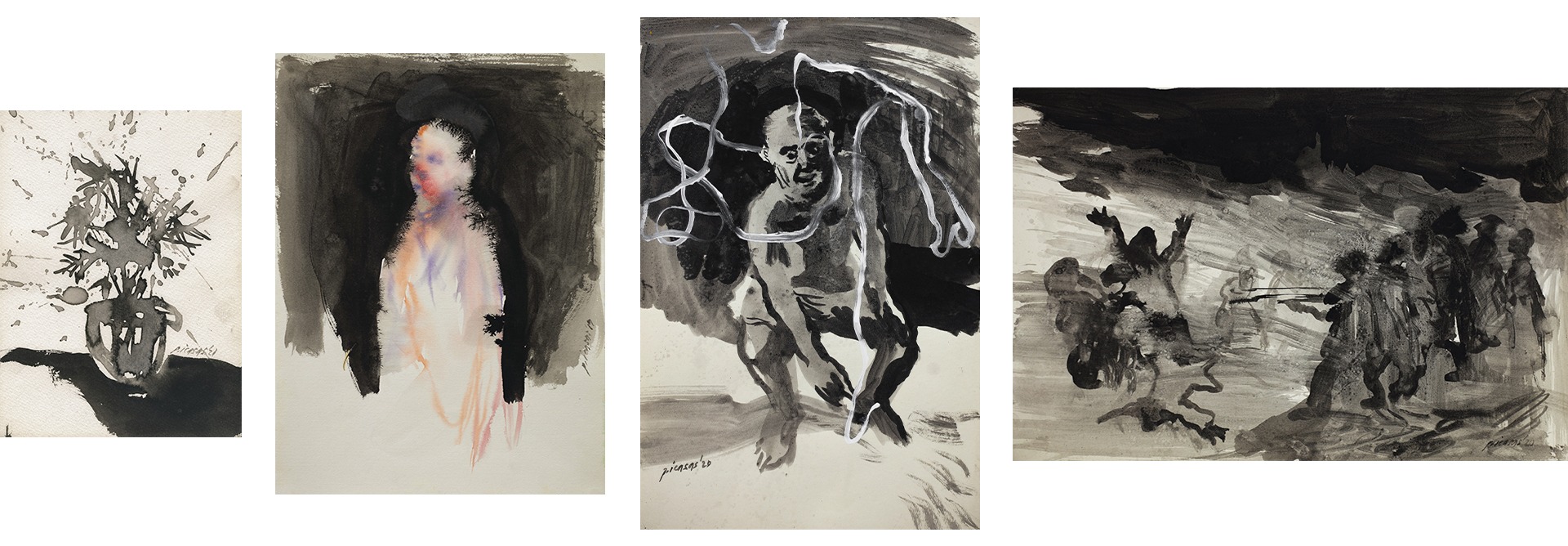
L-R: Paolo Icasas, House Plant 5, Glow, Picasso painting with light, After Goya's The Third of May, 2020-2021. ink and watercolour on paper.
Perhaps, this transparency is encouraged by diluting the ink with water, allowing the pigments to further dissolve and permeate into the fibers as it momentarily deforms the paper; creating undulations where excess liquids may pool, leaving distinct yet unplanned patterns and imprints.
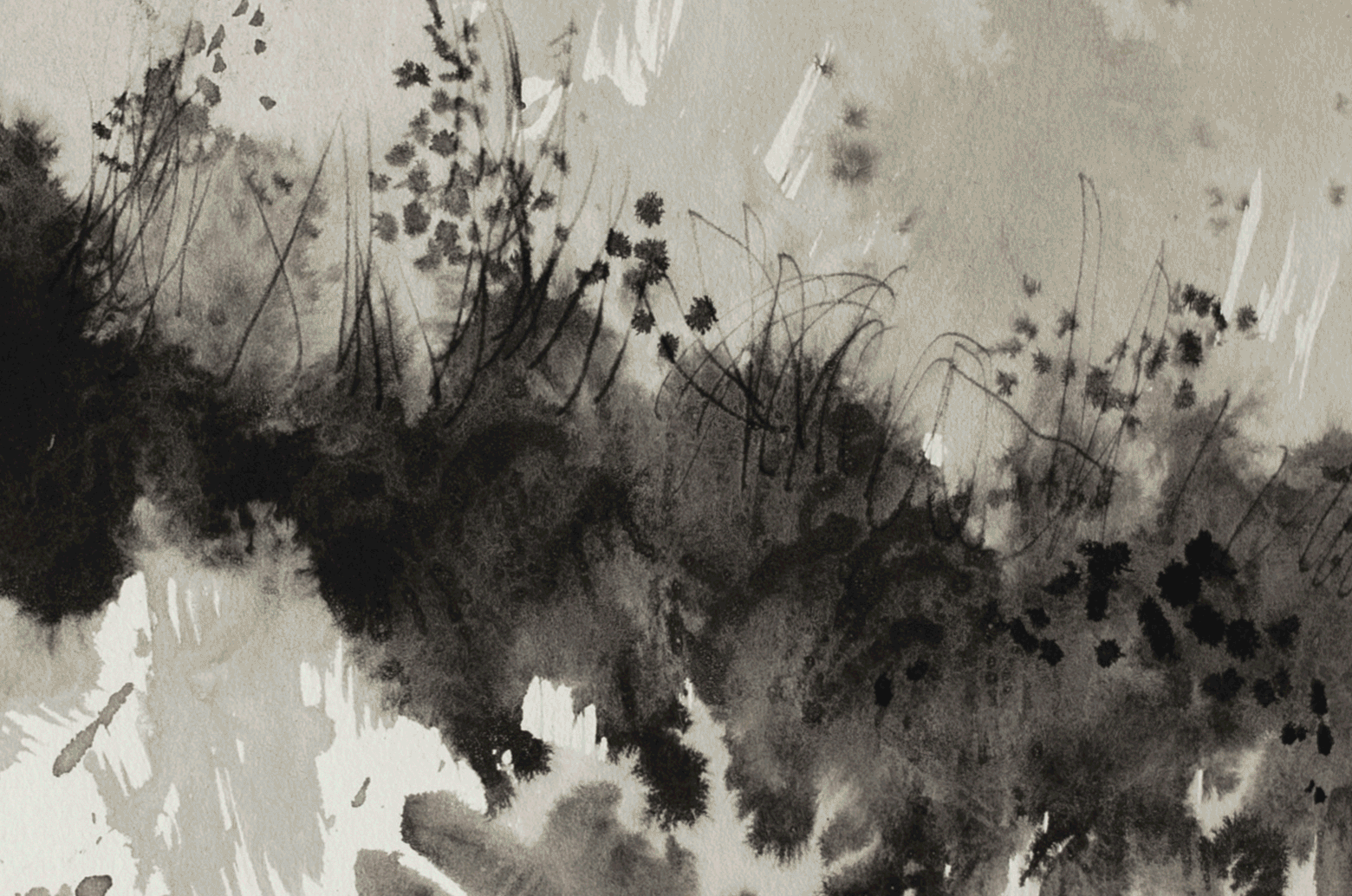
Ink runs, blots, sputters; it can stain, bleed, vandalize; in time it may coagulate, cake, and run dry. Indeed, ink touches paper already seeking and marking its own path. And as he continues to work in this medium, Paolo in turn learns more about surrendering control. What he once viewed as mistakes have taken on a different cause, in the process revealing what can’t be purposefully rendered by a rigid hand.
– Gary-Ross Pastrana

Ink runs, blots, sputters; it can stain, bleed, vandalize; in time it may coagulate, cake, and run dry. Indeed, ink touches paper already seeking and marking its own path. And as he continues to work in this medium, Paolo in turn learns more about surrendering control. What he once viewed as mistakes have taken on a different cause, in the process revealing what can’t be purposefully rendered by a rigid hand.
– Gary-Ross Pastrana
About
Often painting landscapes inspired by the locales where he lives and works, Paolo Icasas (b. 1981) steers away from traditional rural landscapes, usually featuring Filipino peasant life with accompanying imagery, but keeps similar sentiments. His paintings are inspired by work—often manual labor—by the daily struggles of the common man, by the uncertainties that always go with living, and by man’s universal longing for rest.
We were first introduced to Icasas’ darkly-lit landscapes in Life Jacket Under Your Seat (2016), an exhibition with Surrounded By Water in Jogjakarta, Indonesia, which was re-exhibited in Blanc Gallery shortly after.
His landscapes were of vacant lots, which he sees as a parallel to manual laborers and the humility of their nature of work, one that does not demand any applause. Having taken over the responsibilities of his late father—particularly being in charge of his family’s small construction business— and taking his father’s workers under his care, he does not remain an observer but is an active participant in his paintings’ narratives.
His recent works, which revolve around themes of rest and uncertainty, have less urban elements than those that came before. This is influenced by the shift of his place of work from the city to a provincial setting. Still, his landscapes remain strange yet familiar, a place that perhaps one has gone before in life or in a dream, invoking a feeling, a memory, evoking a yearning for home or what used to be such.
Notable are his large-sized paintings, immersive in scale and lushly tactile in texture, with thick strokes and heavy smears of oil paint, sometimes infused with ground charcoal, rough, relief-like. He has previously shown these works in solo exhibitions at the Cultural Center of the Philippines and Blanc Gallery.
His recent works, however, have evolved into a different iteration of themselves, not shy with the use of colors, also not shy in its absence. By scraping and scratching in different intensities, continuously adding paint, and employing painting gestures similar to lathering, his recent works achieve this depth, which makes them softer and more fluid. His painting process has become more free; he has accepted every accident and let go of his grip on control, allowing mistakes to contribute to the painting's beauty. He is able to create the most unadulterated image he is capable of when he allows himself to let go of his previous notions of what's a mistake and what looks beautiful during his painting process.
My works on paper are a spillage of thoughts. I do them in the morning as an act of clearing the head and loosening the hand. The ritual begins as a spontaneous utterance, and somewhere in the middle it becomes active meditation. My subjects vary, but are usually dependent of the morning's disposition.
To fill a bucket with seawater using only hands, one must be deliberate and quick. This is how I believe I must be with my process. The faster I paint, the closer the image on the paper is to the image in my mind. In this process, the boundaries between when the image was conceived, when it was being created, and when it was completed become blurred. The whole painting process is like a breath – no allowances to sift through and organize, only to exhale. Sometimes, however, the painting process could become more of a heave than a breath. I have a tendency to work on several pieces at once, during which the process becomes quite intense but also rhythmic, and the experience trance-like.
My works on paper do not serve as studies; they are independent of my oil paintings. For me, painting with watercolor and ink is not a method of preparation for a final oil work; rather it is another avenue for creation and translation of thoughts. It is a different kind of freedom – never demanding of time or reverence, only action.
– Paolo Icasas
Works
